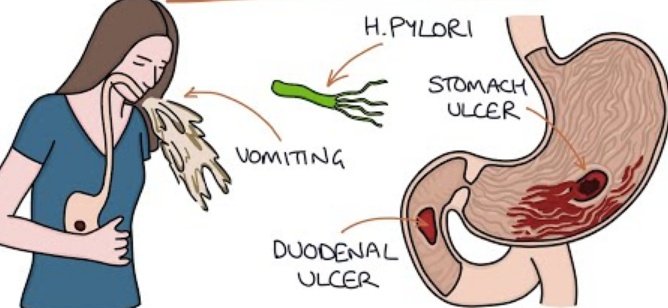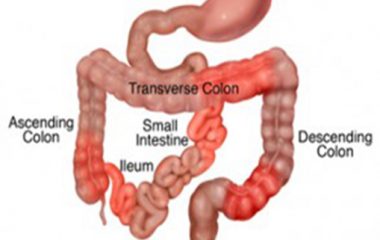Bleeding in Stomach and Intestines: Gastrointestinal Bleeding – Symptoms and Causes
What are the symptoms of GI bleeding? How can bleeding happen in the digestive tract? What are the possible causes of gastrointestinal bleeding?
Symptoms of Gastrointestinal Bleeding
Symptoms of gastrointestinal (GI) bleeding may include:
- Black or tarry stool
- Bright red blood in vomit
- Cramps in the abdomen
- Dark or bright red blood mixed with stool
- Dizziness or faintness
- Feeling tired
- Paleness
- Shortness of breath
- Vomit that looks like coffee grounds
- Weakness
Acute Bleeding Symptoms
You may go into shock if you have acute bleeding, which is an emergency condition. Symptoms of shock include a drop in blood pressure, little or no urination, a rapid pulse, and unconsciousness. If you have any symptoms of shock, you or someone should call 911 right away.
Chronic Bleeding Symptoms
You may develop anemia if you have chronic bleeding. Symptoms of anemia may include feeling tired and shortness of breath, which can develop over time. Some people may also have occult bleeding, which is a symptom of inflammation or a disease such as colorectal cancer.

Causes of Gastrointestinal Bleeding
Many conditions can cause GI bleeding, and a doctor can try to find the cause by locating the source of the bleeding. Some possible causes include:
Angiodysplasia
Angiodysplasia is when you have abnormal or enlarged blood vessels in your GI tract that can become fragile and bleed.
Benign Tumors and Cancer
Benign tumors and cancer in the esophagus, stomach, colon, or rectum may cause bleeding when they weaken the lining of the GI tract.
Colitis
Ulcers in the large intestine are a complication of colitis, an inflammatory bowel disease that can cause GI bleeding.
Colon Polyps
Colon polyps can cause GI bleeding, and some types of polyps may be cancerous or can become cancerous.
Diverticular Disease
Diverticular disease can cause GI bleeding when small pouches or sacs form and push outward through weak spots in the colon wall.
Esophageal Varices
Esophageal varices can cause GI bleeding and are usually related to a chronic liver condition called cirrhosis.

Esophagitis
The most common cause of esophagitis is gastroesophageal reflux (GER), which can damage the esophagus and cause sores and bleeding.
Gastritis
Some common causes of gastritis include H. pylori infection and use of nonsteroidal anti-inflammatory drugs (NSAIDs). If untreated, gastritis can lead to ulcers or worn-away areas of the stomach lining that can bleed in the GI tract.
Hemorrhoids or Anal Fissures
Hemorrhoids can cause GI bleeding, and constipation and straining during bowel movements can cause hemorrhoids to swell. Anal fissures are small tears that also can cause bleeding in the anus.
Mallory-Weiss Tears
Severe vomiting may cause Mallory-Weiss tears, which can cause GI bleeding.
Peptic Ulcers
The bacteria Helicobacter pylori (H. pylori) and use of NSAIDs can cause peptic ulcers, which can wear away the mucosa and cause GI bleeding.
Treating Gastrointestinal Bleeding
Bleeding in the digestive tract is a symptom of a problem rather than a disease itself. It usually happens due to conditions that can be cured or controlled, such as hemorrhoids. The cause of the bleeding may not be serious, but it’s important for your doctor to find the source of this symptom.

The digestive or gastrointestinal (GI) tract includes the esophagus, stomach, small intestine, colon, rectum, and anus. Bleeding can come from one or more of these areas — from a small area such as an ulcer on the lining of the stomach or from a broader problem such as inflammation of the colon.
You may not know if it happens. Doctors call this type of bleeding “occult” or “hidden.” Fortunately, simple tests can check for hidden blood in the stool.
Why Does Gastrointestinal Bleeding Happen?
The reasons for GI bleeding vary, depending on where the bleeding is happening. If it’s in your esophagus, causes can include esophagitis and gastroesophageal reflux, which can cause irritation and inflammation of the esophagus that may lead to bleeding. Varices, which are abnormally enlarged veins usually located at the lower end of the esophagus or the upper stomach, may also break open and cause bleeding.
If the bleeding is in the stomach, it may be caused by gastritis, peptic ulcers, or a condition called Mallory-Weiss syndrome, which is a tear in the lining of the stomach or esophagus caused by vomiting.
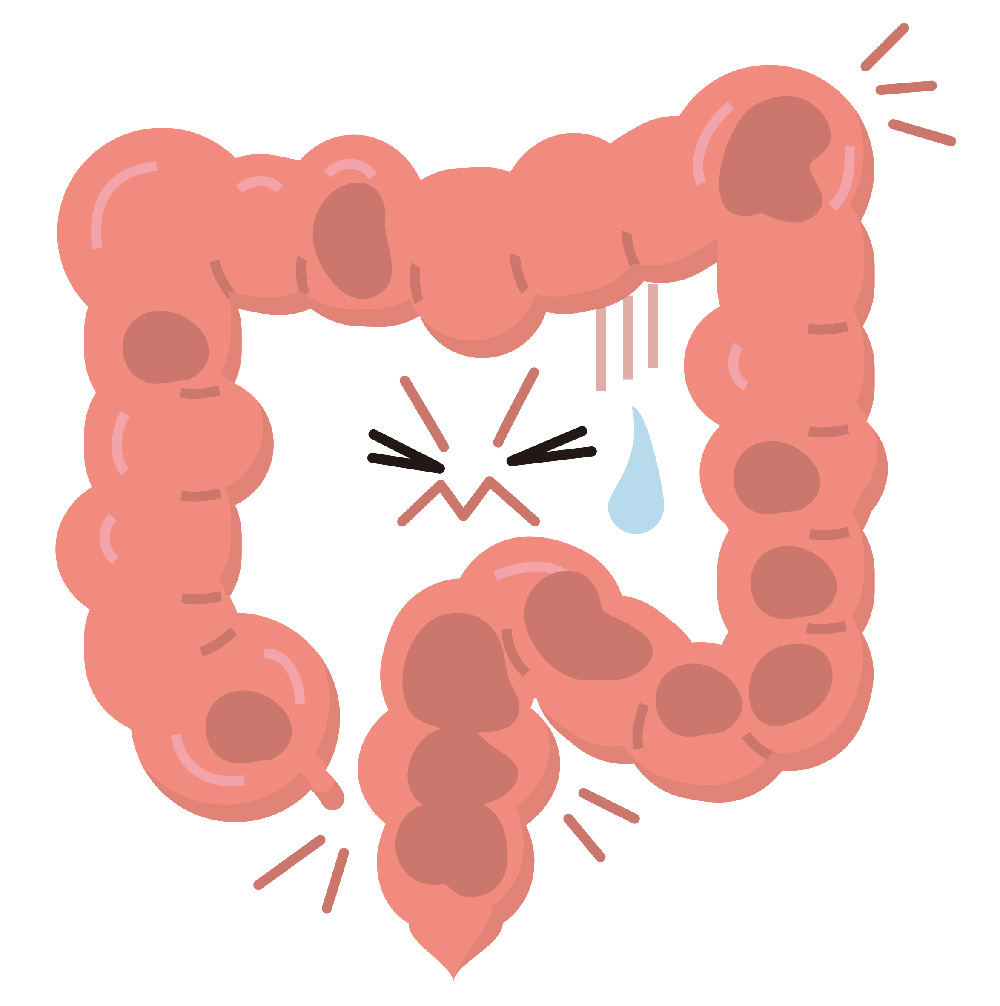
Bleeding in the small intestine can be caused by conditions such as Crohn’s disease, celiac disease, or small intestinal bacterial overgrowth. In the colon, bleeding can be caused by diverticulosis, inflammatory bowel diseases like ulcerative colitis, or colorectal cancer.
Hemorrhoids and anal fissures, which are small tears in the anus, can also cause lower GI bleeding.
How is Gastrointestinal Bleeding Treated?
The treatment for GI bleeding depends on the underlying cause. Some common treatments include:
- Medications to reduce stomach acid or treat infections like H. pylori
- Endoscopic procedures to stop bleeding or remove polyps or tumors
- Surgery to repair damage or remove the affected part of the digestive tract
- Dietary changes to reduce irritation or inflammation
It’s important to see a doctor if you have any signs of GI bleeding, as it can be a symptom of a serious underlying condition. Prompt diagnosis and treatment can help address the root cause and prevent complications.
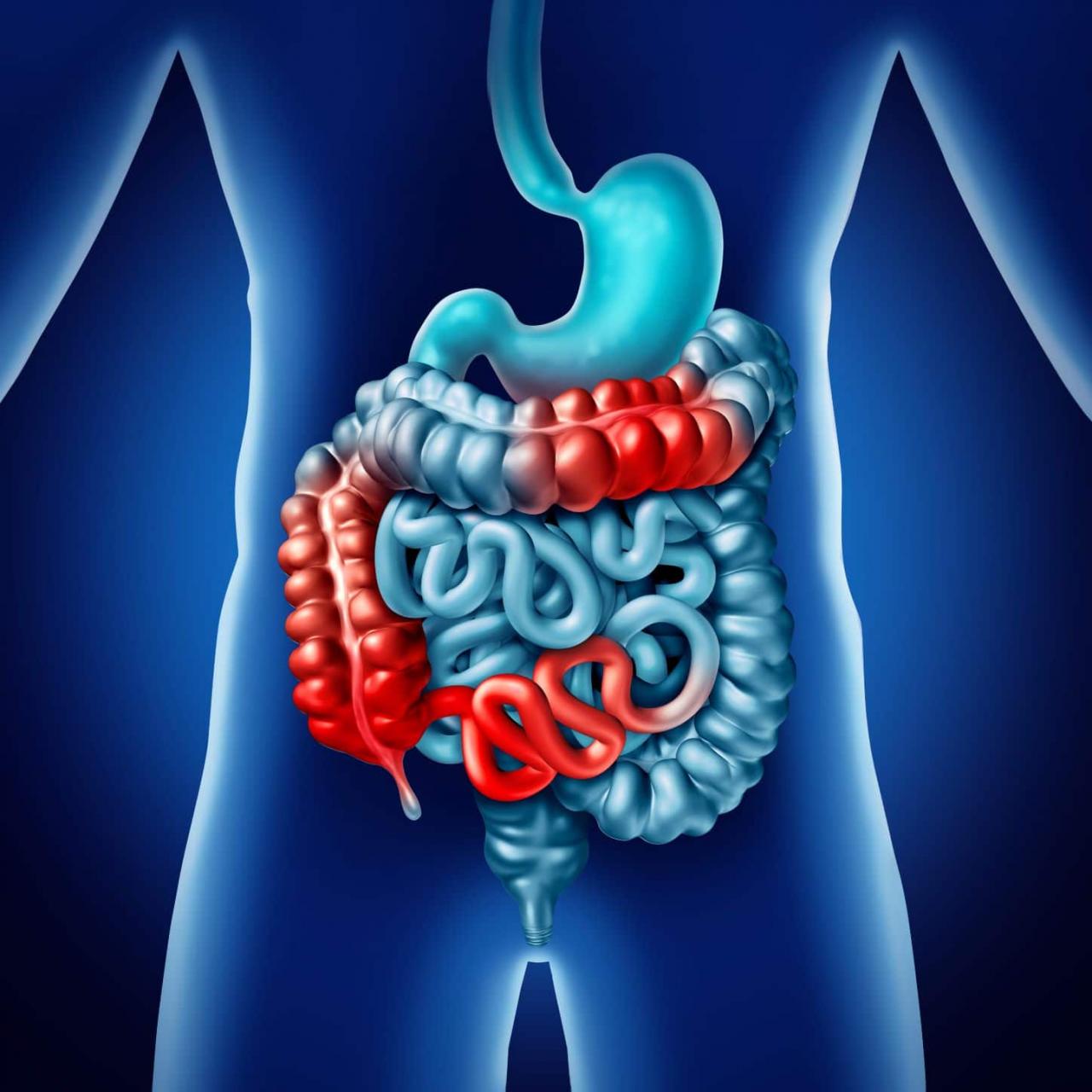
Symptoms & Causes of GI Bleeding
What are the symptoms of GI bleeding?
Symptoms of gastrointestinal (GI) bleeding may include
- black or tarry stool
- bright red blood in vomit
- cramps in the abdomen
- dark or bright red blood mixed with stool
- dizziness or faintness
- feeling tired
- paleness
- shortness of breath
- vomit that looks like coffee grounds
- weakness
Acute bleeding symptoms
You may go into shock if you have acute bleeding. Acute bleeding is an emergency condition. Symptoms of shock include
- a drop in blood pressure
- little or no urination
- a rapid pulse
- unconsciousness
If you have any symptoms of shock, you or someone should call 911 right away.
Chronic bleeding symptoms
You may develop anemia if you have chronic bleeding. Symptoms of anemia may include feeling tired and shortness of breath, which can develop over time.
Some people may have occult bleeding. Occult bleeding may be a symptom of inflammation or a disease such as colorectal cancer. A simple lab test can detect occult blood in your stool.
What causes GI bleeding?
Many conditions can cause GI bleeding. A doctor can try to find the cause of your bleeding by finding its source. The following conditions, which are listed in alphabetical order, include possible causes of GI bleeding:
Angiodysplasia. Angiodysplasia is when you have abnormal or enlarged blood vessels in your GI tract. These blood vessels can become fragile and bleed.
Benign tumors and cancer. Benign tumors and cancer in the esophagus, stomach, colon, or rectum may cause bleeding when they weaken the lining of the GI tract. A benign tumor is an abnormal tissue growth that is not cancerous.
Colitis. Ulcers in the large intestine are a complication of colitis. Ulcerative colitis is an inflammatory bowel disease that can cause GI bleeding.
Colon polyps. Colon polyps can cause GI bleeding. You can have more than one colon polyp at a time. Some types of polyps may be cancerous or can become cancerous.
Diverticular disease. Diverticular disease can cause GI bleeding when small pouches, or sacs, form and push outward through weak spots in your colon wall.
Esophageal varices. Esophageal varices can cause GI bleeding. Esophageal varices are usually related to a chronic liver condition called cirrhosis.
Esophagitis. The most common cause of esophagitis is gastroesophageal reflux (GER). GER happens when your lower esophageal sphincter is weak or relaxes when it should not. Stomach acid can damage your esophagus and cause sores and bleeding.
Gastritis. Some common causes of gastritis include
If untreated, gastritis can lead to ulcers or worn-away areas of the stomach lining that can bleed in your GI tract.
Hemorrhoids or anal fissures. Hemorrhoids can cause GI bleeding. Constipation and straining during bowel movements cause hemorrhoids to swell. Hemorrhoids cause itching, pain, and sometimes bleeding in your anus or lower rectum. Anal fissures are small tears that also can cause itching, tearing, or bleeding in your anus.
Mallory-Weiss tears. Severe vomiting may cause Mallory-Weiss tears, which can cause GI bleeding. You can have more than one Mallory-Weiss tear at a time.
Peptic Ulcers. The bacteria Helicobacter pylori (H. pylori) and use of NSAIDs can cause peptic ulcers. Peptic ulcers can wear away your mucosa and cause GI bleeding.
Nonsteroidal anti-inflammatory drugs (NSAIDs) can cause peptic ulcers, which can cause GI bleeding
Why It Happens & How To Treat It
Bleeding in the digestive tract is a symptom of a problem rather than a disease itself. It usually happens due to conditions that can be cured or controlled, such as hemorrhoids.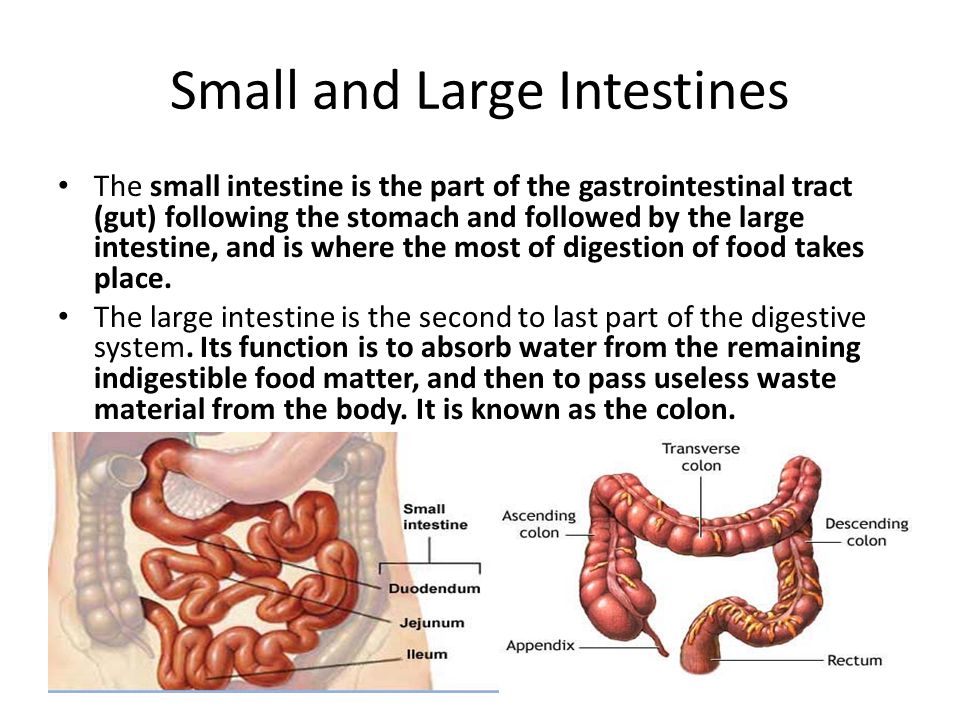
The cause of the bleeding may not be serious, but it’s important for your doctor to find the source of this symptom. The digestive or gastrointestinal (GI) tract includes the esophagus, stomach, small intestine, colon, rectum, and anus. Bleeding can come from one or more of these areas — from a small area such as an ulcer on the lining of the stomach or from a broader problem such as inflammation of the colon.
You may not know if it happens. Doctors call this type of bleeding “occult” or “hidden.” Fortunately, simple tests can check for hidden blood in the stool.
Why Does It Happen?
The reasons vary, depending on where the bleeding is happening.
If it’s in your esophagus (the tube that connects your mouth to your stomach) causes can include:
Esophagitis and gastroesophageal reflux. Stomach acid that returns, or “refluxes,” back into the esophagus from the stomach can cause irritation and inflammation of the esophagus (esophagitis) that may lead to bleeding. Read more about gastroesophageal reflux (GERD).
Read more about gastroesophageal reflux (GERD).
Varices. These are abnormally enlarged veins usually located at the lower end of the esophagus or the upper stomach. They may break open and bleed. Cirrhosis of the liver is the most common cause of esophageal varices. Learn more about the symptoms of bleeding varices.
Mallory-Weiss tear. This is a tear in the lining of the esophagus. It’s usually caused by severe vomiting. It can also happen due to things that increase pressure in your belly, such as coughing, hiccupping, or childbirth. Find out more on nausea and vomiting.
Bleeding from the stomach can be caused by:
Gastritis. This is inflammation in the stomach. Alcohol and some pain medicines can cause it. Watch a video about gastritis.
Ulcers. Ones in the stomach may enlarge and erode through a blood vessel, causing bleeding. Aside from medication, the most common cause of these is an infection with a bacterium called Helicobacter pylori. Also, people who have had burns, shock, head injuries, or cancer, and those who’ve had major surgery, may get stress-related stomach ulcers. Get the facts on peptic ulcers.
Also, people who have had burns, shock, head injuries, or cancer, and those who’ve had major surgery, may get stress-related stomach ulcers. Get the facts on peptic ulcers.
Intestinal ulcers are usually caused by excess stomach acid and infection with Helicobacter pylori.
Cancer of the stomach.
Bleeding from the lower digestive tract (colon, rectum, and anus) can be caused by:
Hemorrhoids. These are probably the most common cause of visible blood in the lower digestive tract, especially blood that appears bright red. Hemorrhoids are enlarged veins in the anal area that can rupture and produce blood, which can show up in the toilet or on toilet paper. Learn about the symptoms and causes of hemorrhoids.
Anal fissures. Tears in the lining of the anus can also cause bleeding. These are often very painful. Find out how to treat anal fissures.
Colon polyps. These are growths that can happen in the colon. Some can turn into cancer over time. Colorectal cancer can also cause bleeding. Read more on what you should know about colon polyps.
Colorectal cancer can also cause bleeding. Read more on what you should know about colon polyps.
Intestinal infections.Inflammation and bloody diarrhea can result from intestinal infections. Learn more about common infections such as H. pylori.
Ulcerative colitis. Inflammation and extensive surface bleeding from tiny ulcerations can be the reason for blood showing up in the stool. Get an overview on ulcerative colitis (UC).
Crohn’s diseaseis an immune system condition. It causes inflammation and can result in rectal bleeding. Know the difference between UC and Crohn’s disease.
Diverticular disease is caused by diverticula — little “pouches” that bump out from the colon wall. Read about the symptoms of diverticular disease.
Blood vessel problems.As you age, issues may crop up in the blood vessels of the large intestine, which may cause bleeding. It’s not a normal part of getting older, but it is more likely later in life.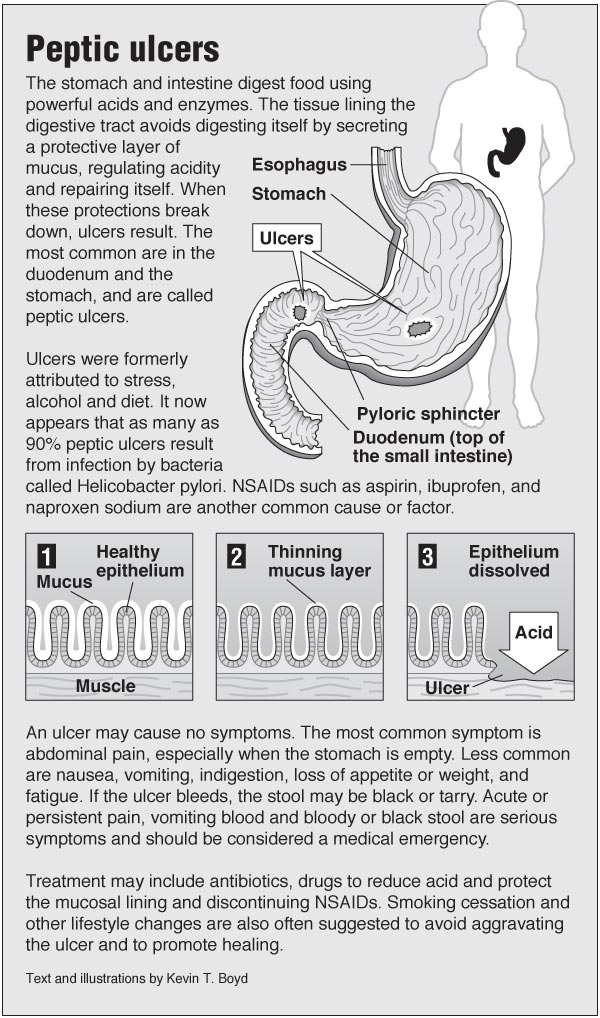
Ischemiccolitis. This means that not enough oxygen is getting to the cells that line the intestine. Bloody diarrhea, often accompanied by belly pain, can happen if not enough blood gets to the intestine, which results in ischemia, or insufficient oxygen, and damage to cells lining the intestine. Get the facts on ischemic colitis.
What Are the Symptoms?
These include:
- Bright red blood coating the stool
- Dark blood mixed with the stool
- Black or tarry stool
- Bright red blood in vomit
- “Coffee-grounds” appearance of vomit
Other signs, which also need a doctor’s attention, include:
- Fatigue, weakness, pale appearance
- Anemia — your blood is low on iron-rich hemoglobin
The location of the bleeding may affect what you notice.
If it comes from the rectum or the lower colon, bright red blood will coat or mix with your stool. The stool may be mixed with darker blood if the bleeding is higher up in the colon or at the far end of the small intestine.
When there’s bleeding in the esophagus, stomach, or duodenum (part of the small intestine), the stool is usually black, tarry, and very foul smelling. Vomit may be bright red or have a “coffee-grounds” appearance when bleeding is from the esophagus, stomach, or duodenum.
If bleeding is hidden, you might not notice any changes in stool color.
Keep in mind that some medications, such as iron, bismuth, and the antibiotic cefdinir, and some foods, such as beets, can give the stool a red or black appearance that looks like blood but isn’t.
Symptoms also vary depending on how quickly you bleed.
If sudden, massive bleeding happens, you may feel weak, dizzy, faint, short of breath, or have cramp-like belly pain or diarrhea. You could go into shock, with a rapid pulse and drop in blood pressure. You may become pale.
If bleeding is slow and happens over a long time, you may gradually feel fatigue, lethargy, and shortness of breath. Anemia can happen, making your skin look more pale.
What Your Doctor Will Check
If you notice any unusual bleeding, make an appointment to see your doctor. They’ll ask you questions and give you a physical examination. Symptoms such as changes in bowel habits, stool color (black or red), consistency, and whether you have pain or tenderness may tell your doctor which area of the GI tract is affected.
They’ll test your stool for blood. You’ll also take a blood test to check to see if you’re anemic. The results will give your doctor an idea of the extent of the bleeding and how chronic it may be.
If you have bleeding in your digestive tract, you’ll likely get an endoscopy. This common procedure lets your doctor see exactly where the symptom is happening. In many cases, the doctor can use the endoscope to treat the cause of bleeding, too. It’s a thin, flexible tool that they can insert through your mouth or rectum to see the areas of concern and take a tissue sample, or biopsy, if needed.
Several other procedures can be used to find the source of bleeding, including:
X-rays. During these tests you either drink or have barium-containing fluid placed through your rectum. Then an X-ray is used to look for any unusual signs. Barium lights up on this imaging test.
During these tests you either drink or have barium-containing fluid placed through your rectum. Then an X-ray is used to look for any unusual signs. Barium lights up on this imaging test.
Angiography. Doctors inject a dye into a vein before you get a CT scan or MRI. The dye helps to show where the trouble is. In some cases, doctors use angiography to inject medicine that may stop the bleeding.
Radionuclide scanning. Doctors can use this screening technique to find sites of bleeding, especially in the lower digestive tract. You’ll get a shot of a small amount of harmless radioactive material before your doctor uses a special camera to take pictures of your organs.
How Is It Treated?
Most cases can be treated. Your plan will depend on what’s causing the bleeding.
You may get an endoscopy. For instance, if your upper digestive tract is bleeding, your doctor may be able to control it by injecting a medication directly into the problem area, using an endoscope to guide the needle.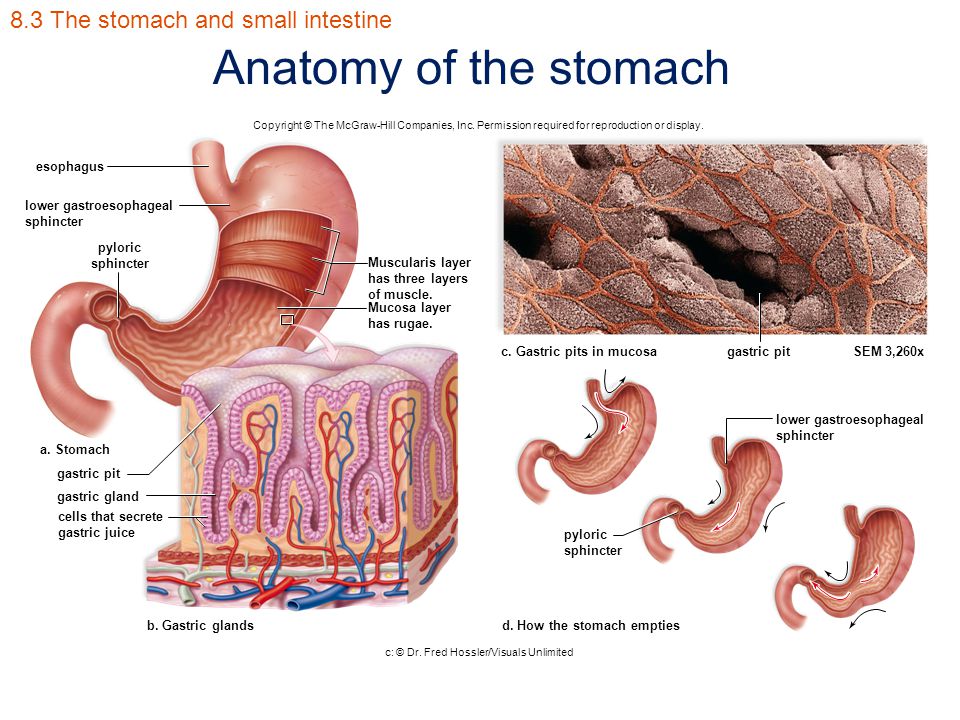 A doctor can also use heat to treat (or “cauterize”) an area that’s bleeding and surrounding tissue through the endoscope, or place a clip on a bleeding blood vessel.
A doctor can also use heat to treat (or “cauterize”) an area that’s bleeding and surrounding tissue through the endoscope, or place a clip on a bleeding blood vessel.
Those techniques aren’t always enough. Sometimes you need surgery.
Once the bleeding is under control, you may need to take medicine to keep it from coming back.
Esophageal Varices Symptoms and Endoscopic Treatments for Cirrhosis
Varices are dilated blood vessels in the esophagus or stomach caused by portal hypertension. They cause no symptoms unless they rupture and bleed, which can be life-threatening.
Someone with symptoms of bleeding varices should seek treatment immediately. Doctors can stop the bleeding and help prevent varices from coming back.
Symptoms of Bleeding Varices
Symptoms include:
Bleeding from varices is a medical emergency. If the bleeding is not controlled quickly, a person may go into shock or die.
Even after the bleeding has been stopped, there can be serious complications, such as pneumonia, sepsis, liver failure, kidney failure, confusion, and coma.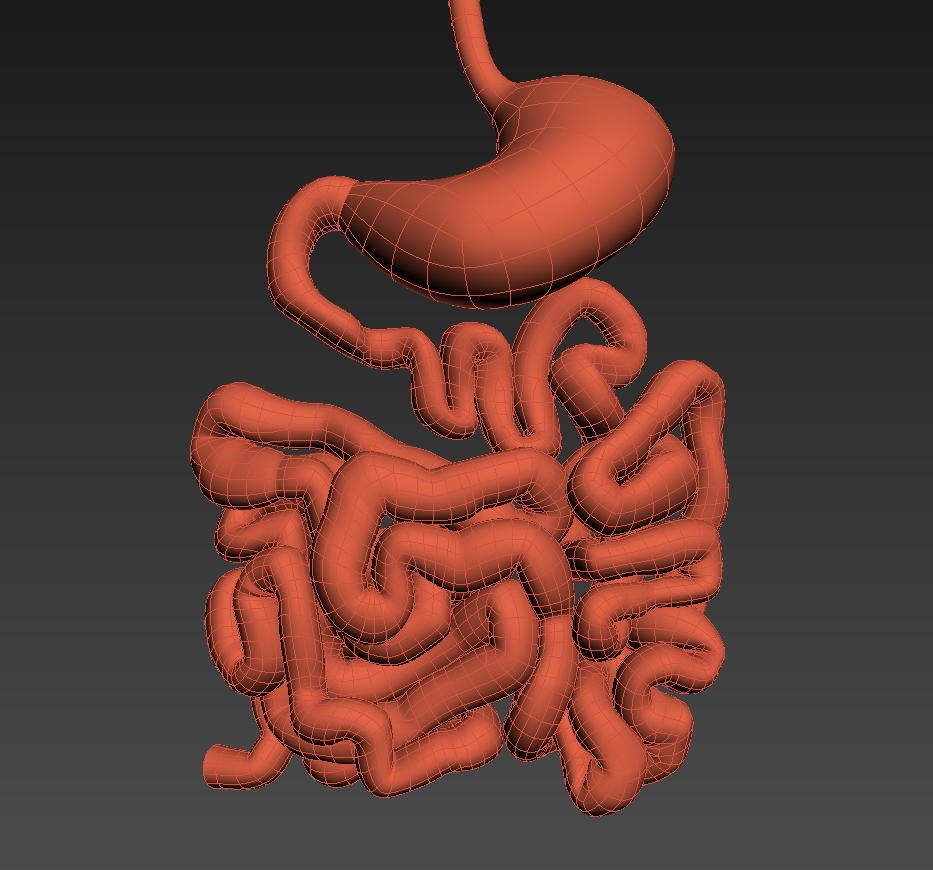
Cause of Bleeding Varices
Portal hypertension is an increase in the pressure within the portal vein (the vein that carries blood from the digestive organs to the liver). It’s often due to scarring of the liver, or cirrhosis.
This increased pressure in the portal vein causes blood to be pushed away from the liver to smaller blood vessels, which are not able to handle the increased amount of blood. This leads to the development of large, swollen veins (varices) within the esophagus, stomach, rectum, and umbilical area (around the belly button). The varices are fragile and can rupture easily, resulting in a large amount of blood loss.
Treatments for Bleeding Varices
In severe cases, a person may need to be placed temporarily on a breathing machine to prevent the lungs from filling with blood. Antibiotics are also given immediately to reduce the risk of sepsis, a life-threatening blood infection.
Aside from the urgent need to stop the bleeding, treatment is also aimed at preventing more bleeding. Procedures that help treat bleeding varices include:
Procedures that help treat bleeding varices include:
- Banding. A gastroenterologist places small rubber bands directly over the varices. This will stop the bleeding and get rid of the varices.
- Sclerotherapy. A gastroenterologist directly injects the varices with a blood-clotting solution instead of banding them.
- Transjugular Intrahepatic Portosystemic Shunt (TIPS). A radiological procedure in which a stent (a tubular device) is placed in the middle of the liver. The stent connects the hepatic vein with the portal vein. This procedure is done by placing a catheter through a vein in the neck. It is done to relieve the high blood pressure that has built up in the portal vein and the liver.
- Distal Splenorenal Shunt (DSRS). A surgical procedure that connects the splenic vein to the left kidney vein in order to reduce pressure in the varices and control bleeding.
- Liver transplant. A liver transplant may be done in cases of end-stage liver disease.

- Devascularization. A surgical procedure that removes the bleeding varices. This procedure is done when a TIPS or a surgical shunt isn’t possible or unsuccessful in controlling the bleeding.
- Esophageal transection. A surgical procedure in which the esophagus is cut through and then stapled back together after the varicies have been tied off. Sometimes there is bleeding at the staple line
Can Bleeding Varices Be Prevented?
Treating the underlying cause of bleeding varices can help prevent their return. Earlier treatment of liver disease may prevent them from developing.
Certain medications, including the class of heart drugs called “beta-blockers,” may reduce elevated portal pressure and lower the likelihood of bleeding. Long-acting nitroglycerines are also used for this purpose.
Also, talk with your doctor about possible procedures that can be done and that have an effect on bleeding.
Gastrointestinal Bleeding – Digestive Disorders
The need for tests depends on what doctors find during the history and physical examination, particularly whether warning signs are present.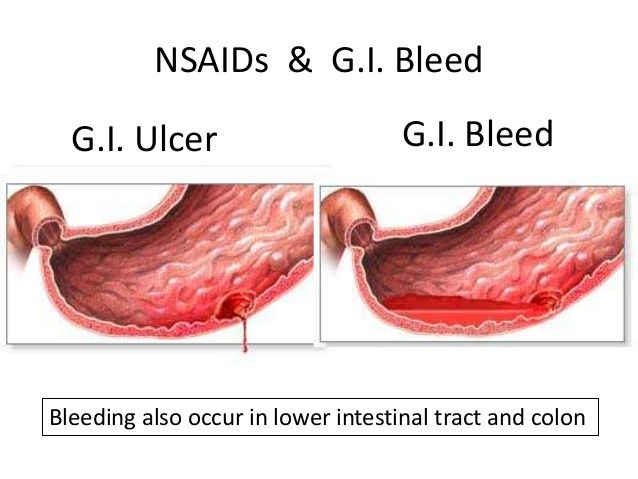
There are four main testing approaches to GI bleeding:
Blood tests and other laboratory studies
Upper endoscopy for suspected upper GI tract bleeding
Colonoscopy for lower GI tract bleeding (unless clearly caused by hemorrhoids)
Angiography if bleeding is rapid or severe
The person’s blood count helps indicate how much blood has been lost. A low platelet count is a risk factor for bleeding. Other blood tests include prothrombin time (PT), partial thromboplastin time (PTT), and liver tests, all of which help detect problems with blood clotting. Doctors often do not do blood tests on people who have minor bleeding caused by hemorrhoids.
People with symptoms typical of hemorrhoids may need only sigmoidoscopy (examination of the lower part of the large intestine, the rectum, and anus using an endoscope). All other people with hematochezia should have colonoscopy (examination of the entire large intestine, the rectum, and the anus using an endoscope).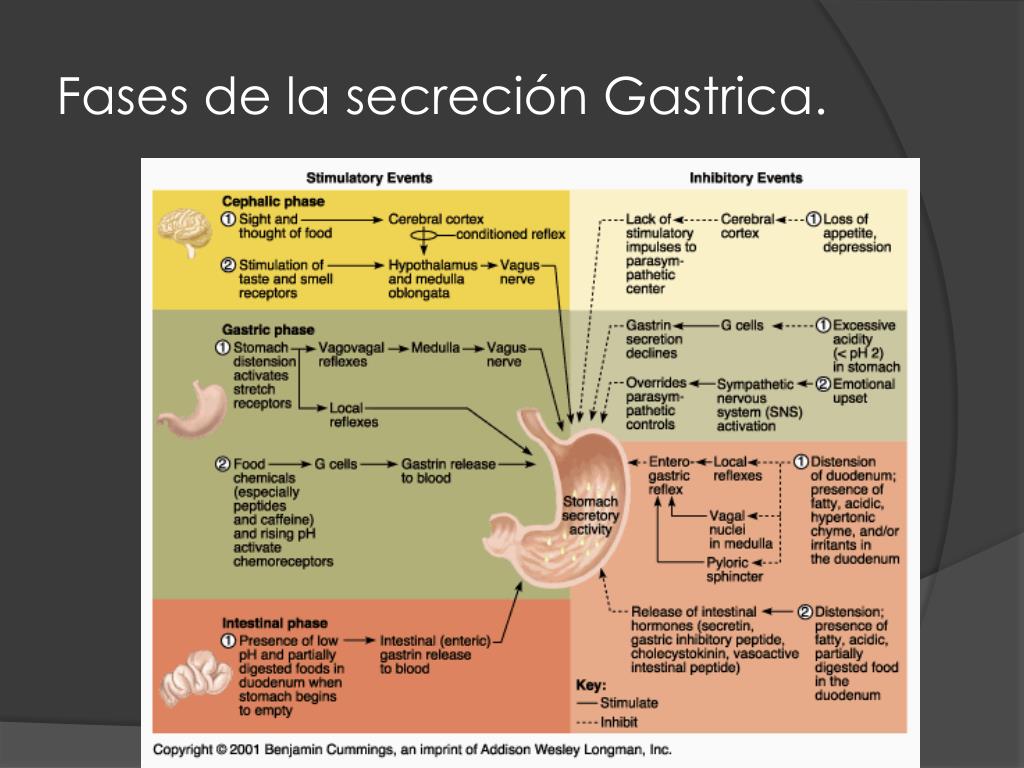
Occasionally, endoscopy (both upper and lower) and colonoscopy do not show the cause of bleeding. There are still other options for finding the source of the bleeding. Doctors may do endoscopy of the small bowel (enteroscopy). If bleeding is rapid or severe, doctors sometimes do angiography Angiography In angiography, x-rays are used to produce detailed images of blood vessels. It is sometimes called conventional angiography to distinguish it from computed tomography (CT) angiography and magnetic… read more . During angiography, doctors use a catheter to inject an artery with a contrast agent that can be seen on x-rays. Angiography helps doctors diagnose upper digestive tract bleeding and allows them to do certain treatments (such as embolization and vasoconstrictor infusion—see Stopping the bleeding Stopping the bleeding Bleeding may occur anywhere along the digestive (gastrointestinal [GI]) tract, from the mouth to the anus. Blood may be easily seen by the naked eye (overt), or blood may be present in amounts. .. read more ). Doctors may also inject the person with red blood cells labeled with a radioactive marker (radionuclide scanning Radionuclide Scanning In radionuclide scanning, radionuclides are used to produce images. A radionuclide is a radioactive form of an element, which means it is an unstable atom that becomes more stable by releasing… read more ). With the use of a special scanning camera, the radioactive marker can sometimes show the approximate location of the bleeding. Before doing angiography or surgery, doctors may also do a test called CT angiography CT angiography In computed tomography (CT), which used to be called computed axial tomography (CAT), an x-ray source and x-ray detector rotate around a person. In modern scanners, the x-ray detector usually… read more . During this procedure, a type of imaging called computed tomography (CT) and a radiopaque contrast agent are used to produce images of blood vessels and sometimes can show the location of the bleeding.
.. read more ). Doctors may also inject the person with red blood cells labeled with a radioactive marker (radionuclide scanning Radionuclide Scanning In radionuclide scanning, radionuclides are used to produce images. A radionuclide is a radioactive form of an element, which means it is an unstable atom that becomes more stable by releasing… read more ). With the use of a special scanning camera, the radioactive marker can sometimes show the approximate location of the bleeding. Before doing angiography or surgery, doctors may also do a test called CT angiography CT angiography In computed tomography (CT), which used to be called computed axial tomography (CAT), an x-ray source and x-ray detector rotate around a person. In modern scanners, the x-ray detector usually… read more . During this procedure, a type of imaging called computed tomography (CT) and a radiopaque contrast agent are used to produce images of blood vessels and sometimes can show the location of the bleeding.
Gastrointestinal Bleeding – Symptoms, Causes, Treatments
Gastrointestinal bleeding is bleeding that occurs anywhere in the digestive tract, also called the gastrointestinal tract, which runs from the mouth to the anus. Blood may be present in vomit or stool. Depending on where the bleeding originates, the blood may be visible or occult, which means that it can be detected only by laboratory testing. The severity of gastrointestinal bleeding varies among individuals depending on the cause. Fresh blood in vomit (hematemesis) suggests lesions in the esophagus (varices). Coffee ground-appearing blood in vomit typically indicates stomach ulcer.
Typically, bleeding from the upper gastrointestinal tract that ‘heads downstream’ manifests as black or tarry stool known as melena. The black color develops because of chemical changes that occur as the blood passes through the digestive tract. The passage of bright red blood from the anus is known as hematochezia and usually results from bleeding from sources that are closer to the anus and rectum.
Common causes of gastrointestinal bleeding are inflammation and infections in the digestive tract, such as gastritis. Mild gastrointestinal bleeding is common with viral infections, and this bleeding will go away as the infection resolves. People with an anal fissure or hemorrhoids may also have mild bleeding that resolves on its own. If severe bleeding occurs, it can result in significant blood loss, leading to symptoms such as lightheadedness, dizziness, fainting, or difficulty breathing.
While gastrointestinal bleeding can be minor, it can also result from severe conditions that are characterized by prolonged bleeding. In these cases, serious complications such as shock can develop. Gastrointestinal bleeding can also occur from cancers in the digestive tract.
Left untreated, severe gastrointestinal bleeding can result in a life-threatening loss of blood.
Seek immediate medical care (call 911) for serious symptoms, pale skin or pallor and difficulty breathing, severe abdominal pain, vomiting blood or black material, or change in level of consciousness.
7 common causes of pediatric GI bleeding, plus treatment information | Digestive | Nutrition | Pediatrics
7 common causes of pediatric GI bleeding
Based on the child’s symptoms, a physical exam, and additional information from the parent, we often can diagnose the underlying issue without much additional testing. For example, we’ll ask about:
- Bowel habits
- Food aversions (they suddenly avoid or “don’t like” a certain food)
- Symptom frequency
- What makes them feel better
The information we gather typically points to one of seven common conditions that can cause GI bleeding in children.
1. Constipation
The most common cause of pediatric lower GI bleeding, constipation, or passing hard stool, can tear the anal tissue (fissures). In the short term, laxatives or stool softeners can provide relief. Long term, increasing fiber in the diet and improving hydration can help.
Some children who have struggled with the pain and bloating of constipation for a long time develop anxiety about going to the bathroom. If that’s the case, your child’s doctor might suggest counseling or play therapy to help them overcome their fears.
If that’s the case, your child’s doctor might suggest counseling or play therapy to help them overcome their fears.
2. Ulcers
These sores on the lining of the GI tract are the most common cause of pediatric upper gastrointestinal bleeding. They can form due to infections such as H. pylori, an organism believed to be spread through person-to-person contact and contaminated food and water.
Taking anti-inflammatories such as aspirin or ibuprofen long term can also cause ulcers by damaging the stomach’s protective mucus membrane.
Along with GI bleeding symptoms, ulcers can cause chest pain, hiccupping or burping, and a burning sensation in the center of the abdomen. Treatment can include medication to cure an underlying infection or antacid medications to neutralize stomach acid.
3. Meckel’s diverticulum
A Meckel’s diverticulum is a surprisingly common problem. It is a pouch, or leftover tissue, in the intestine that didn’t properly absorb as the child’s digestive system developed during pregnancy. The pouch may have stomach tissue in it that makes acid leading to symptoms such as painless rectal bleeding. Children are typically diagnosed before age 10. Treatment includes a minor surgery to remove the culprit tissue.
The pouch may have stomach tissue in it that makes acid leading to symptoms such as painless rectal bleeding. Children are typically diagnosed before age 10. Treatment includes a minor surgery to remove the culprit tissue.
4. Food allergies
Babies can suffer from colitis, an inflammatory reaction in the gut, caused by proteins in formula or breast milk. The most common offenders are cow milk protein and soy. These proteins can be present in both formula and breast milk through the mother’s diet. Other foods including nuts, wheat, fish, and egg can cause GI symptoms as well.
Aside from GI bleeding, symptoms can include nausea, vomiting, diarrhea, and food aversion. Treatment approaches range from creating a plan to avoid trigger foods to medication or other therapies to control symptoms and repair damaged GI tissue.
5. Gastritis
Gastritis occurs when the lining of your child’s stomach becomes inflamed or irritated. It can be caused by chronic stress, excessive vomiting, infections, autoimmune disorders such as diabetes or thyroid disease, or certain medicines like anti-inflammatory drugs or steroids. Toddlers might develop gastritis from swallowing toxic non-food objects such as batteries.
Toddlers might develop gastritis from swallowing toxic non-food objects such as batteries.
Symptoms might include abdominal pain, bloating, indigestion, GI bleeding, and loss of appetite. Treatment usually includes medication to reduce stomach acid, heal infections, and treat underlying conditions.
6. Inflammatory bowel disease
School-aged children and adolescents might have GI bleeding due to inflammatory bowel disease. There are two types of IBD:
- Ulcerative colitis affects the innermost lining of the colon and rectum. Any part of the colon and rectum can be involved, though only about one-third of patients have this disease affecting their entire colon.
- Crohn’s disease usually affects the end of the small intestine and the beginning of the colon (also called the cecum), but it can be found anywhere in the GI tract. In some cases, it can extend through the entire thickness of the bowel wall.
Both can cause bloody diarrhea, stomach pain, unexplained weight loss, fatigue, and nutritional issues. They can also be associated with joint pain. Treatment might include dietary changes, anti-inflammatory medication, or surgery in severe cases.
They can also be associated with joint pain. Treatment might include dietary changes, anti-inflammatory medication, or surgery in severe cases.
7. Polyps
Children can also develop small clumps of cells on the lining of the colon called polyps. These formations can be genetic and usually are not serious, though they can lead to iron-deficiency anemia or GI bleeding. Fortunately, unlike in adults, colon cancer is extraordinarily rare in children. Problematic polyps can be removed without surgery through a simple colonoscopy procedure.
Related reading: What causes GI issues in teens – and how to get them to talk about it
Gastrointestinal (GI) Bleeding, When You Have
Blood in your vomit or stool can be a sign of gastrointestinal (GI) bleeding. GI bleeding can be scary. But the cause may not be serious. You should always see a doctor if you have GI bleeding.
The GI tract is the path through which food travels in the body. Food passes from the mouth down the esophagus. This is the tube from the mouth to the stomach. Food starts to break down in the stomach. It then moves through the duodenum , the first part of the small intestine . Nutrients are absorbed as food travels through the small intestine. What is left passes into the colon (large intestine) as waste. The colon removes water from the waste. Waste continues from the colon to the rectum (where stool is stored). Waste then leaves the body through the anus . The upper GI tract is from the mouth through the duodenum. The lower GI tract is from the end of the duodenum to the anus.
Food passes from the mouth down the esophagus. This is the tube from the mouth to the stomach. Food starts to break down in the stomach. It then moves through the duodenum , the first part of the small intestine . Nutrients are absorbed as food travels through the small intestine. What is left passes into the colon (large intestine) as waste. The colon removes water from the waste. Waste continues from the colon to the rectum (where stool is stored). Waste then leaves the body through the anus . The upper GI tract is from the mouth through the duodenum. The lower GI tract is from the end of the duodenum to the anus.
Causes of GI bleeding
GI bleeding can be caused by many different problems. Some of the more common causes include:
- Swollen veins in the anus (hemorrhoids)
- Swollen veins in the esophagus (varices)
- Sore on the lining of the GI tract (ulcer)
- Cuts or scrapes in the mouth or throat
- Infection caused by germs such as bacteria or parasites
- Food allergies, such as milk allergy in young children
- Medicines, especially aspirin, blood thinners, and NSAIDs (non-steroidal anti-inflammatory drugs) such as ibuprofen
- Inflammation of the GI tract (gastritis or esophagitis)
- Colitis (Crohn’s disease or ulcerative colitis)
- Cancer (tumors or polyps)
- Abnormal pouches in the colon (diverticula)
- Tears in the esophagus or anus
- Nosebleed
- Abnormal blood vessels in the GI tract (angiodysplasia)
Diagnosing the cause of blood in stool
If blood is coming out in your stool, you may have a lower GI tract problem or a very fast upper GI tract bleed.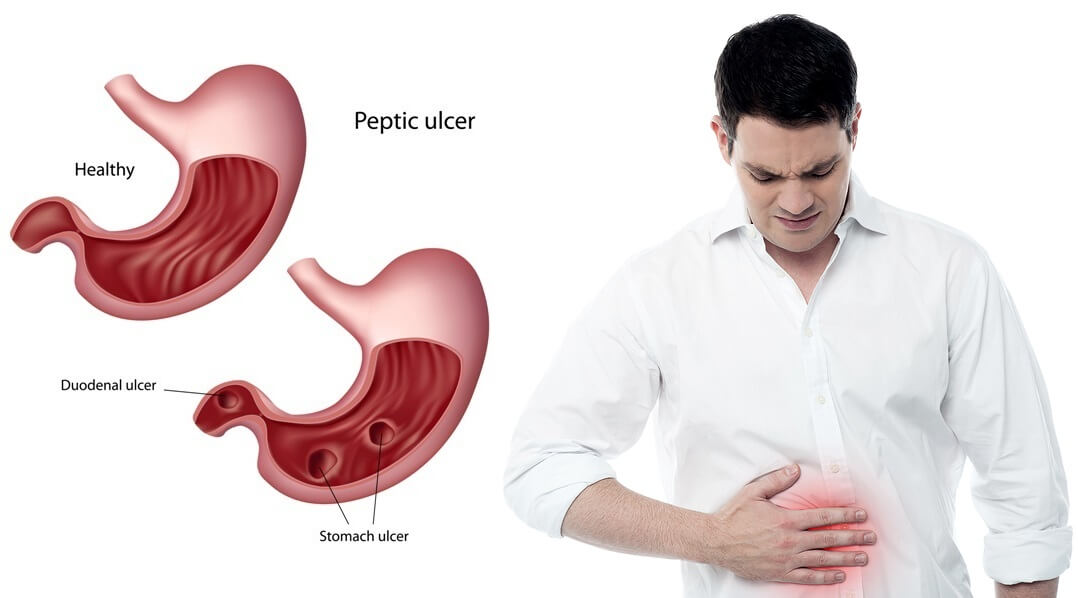 Bleeding from the GI tract can be bright red. Or it may look dark and tarry. Tests may also find blood in your stool that can’t be seen with the eye (occult blood). To find out the cause, tests that may be ordered include:
Bleeding from the GI tract can be bright red. Or it may look dark and tarry. Tests may also find blood in your stool that can’t be seen with the eye (occult blood). To find out the cause, tests that may be ordered include:
- Blood tests. A blood sample is taken and sent to a lab for exam.
- Hemoccult test. Checks a stool sample for blood.
- Stool culture. Checks a stool sample for bacteria or parasites.
- X-ray, ultrasound, nuclear scan, or CT scan. Imaging tests that take pictures of the digestive tract.
- Colonoscopy or sigmoidoscopy. This test uses a flexible tube with a tiny camera. The tube is inserted through your anus into your rectum to see the inside of your colon. Your provider can also take a tiny tissue sample (biopsy) and treat a bleeding source
- Capsule endoscopy.
 This test uses a tiny camera that is swallowed, passes through the intestine, and takes pictures of the small intestine that is more difficult to reach with scopes.
This test uses a tiny camera that is swallowed, passes through the intestine, and takes pictures of the small intestine that is more difficult to reach with scopes.
Diagnosing the cause of blood in vomit
If you are vomiting blood or something that looks like coffee grounds, you may have an upper GI tract problem. To find the cause, tests that may be done include:
- Upper endoscopy. A flexible tube with a tiny camera is inserted through your mouth and throat to see inside your upper GI tract. This lets your provider take a tiny tissue sample (biopsy) and treat a bleeding source.
- Nasogastric lavage. The healthcare provider may withdraw some of the fluid in the stomach to test it for bleeding. This can sometimes tell if you have upper GI or lower GI bleeding.
- X-ray, ultrasound, nuclear scan, or CT scan.
 Imaging tests that take pictures of your digestive tract.
Imaging tests that take pictures of your digestive tract. - Upper GI series. X-rays of the upper part of your GI tract taken after swallowing a contrast drink. .
- Enteroscopy. This sends a flexible tube or a small, swallowed capsule camera into your small intestine.
When to call your healthcare provider
Call your healthcare provider right away if you have any of the following:
- Fever of 100.4° F ( 38.0°) or higher
- Signs of fluid loss (dehydration). These include a dry, sticky mouth, decreased urine output, and very dark urine.
- Belly (abdominal) pain
Call 911
Call 911, or get medical care right away if any of the following occur:
- Bleeding from your mouth or anus that can’t be stopped
- Bleeding along with feeling lightheaded or dizzy
© 2000-2021 The StayWell Company, LLC. All rights reserved. This information is not intended as a substitute for professional medical care. Always follow your healthcare professional’s instructions.
All rights reserved. This information is not intended as a substitute for professional medical care. Always follow your healthcare professional’s instructions.
90,000 what can cause, symptoms and preventive measures
About the problems of morbidity of the digestive system and the steady increase in the number of bleeding against the background of peptic ulcer diseases, we have been talking with the head of the Department of Gastroenterology and Dietetics of the St. Petersburg MAPO since 1992, a member of the board of the St. S. P. Botkin, doctor of the highest category, professor Baranovsky Andrey Yurievich.
How big is the increase in the development of peptic ulcer disease and associated bleeding?
It’s a bit early to talk about the persistence of the quantitative increase in gastrointestinal bleeding.Annual statistics are unstable and fluctuating constantly. The past year has shown that the number of patients hospitalized with a diagnosis of ulcer perforation is even slightly lower than in the previous year.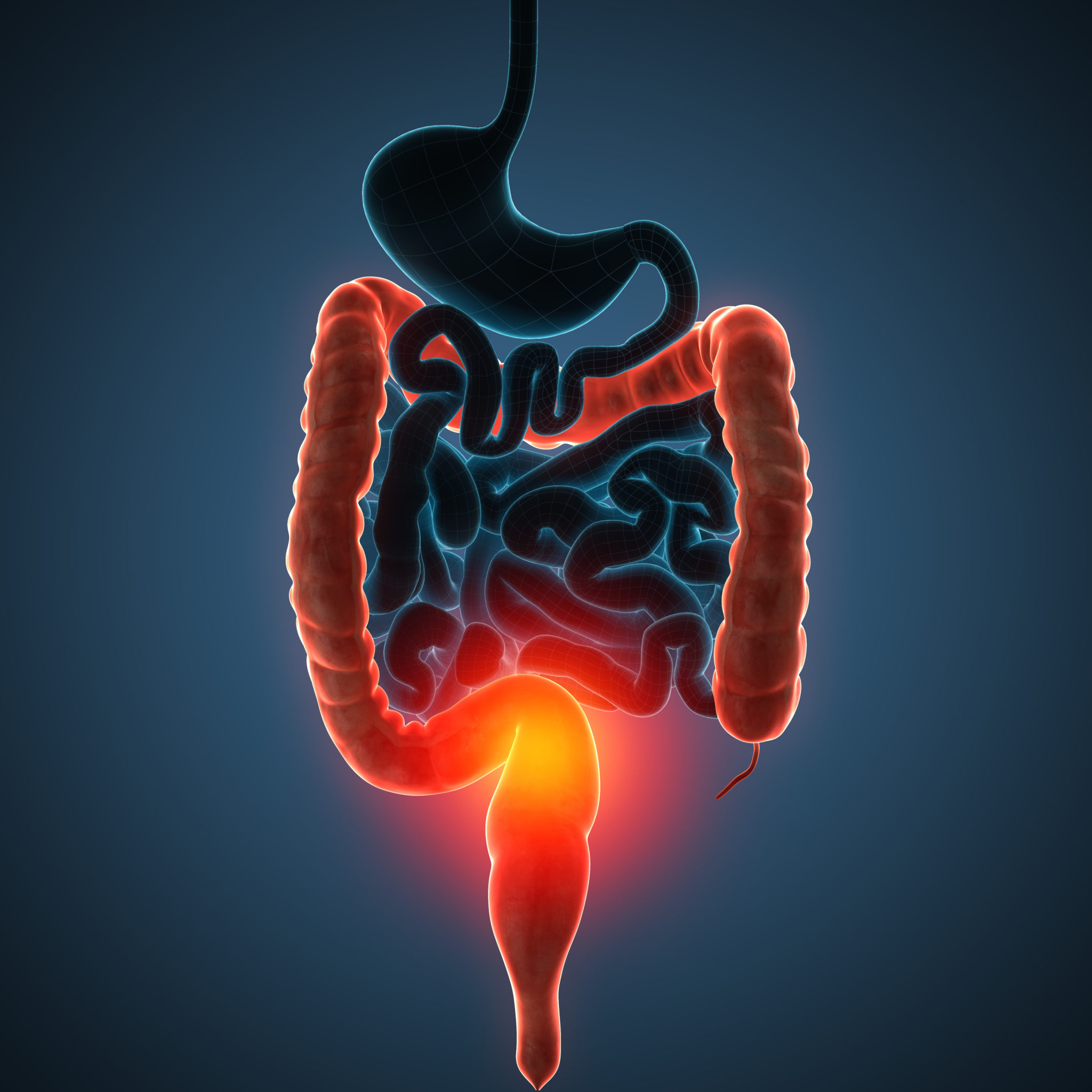
However, cases of diseases of the upper gastrointestinal tract, leading to bleeding, have become more frequent. And in men. As it turned out, men are almost twice more susceptible to erosive and ulcerative diseases of the stomach and duodenum than women.The destructiveness of the processes and the lack of proper preventive measures on the part of the patient are expressed in complications of a hemorrhagic nature, which can lead to a lethal outcome, which amounted to 3.5% in terms of last year.
But the trend towards an increase in the number of patients diagnosed with erosive and ulcerative lesions of the digestive tract over the past decade is still observed. As the main cause of the onset of the disease, one can consider both organ pathology and endogenous and exogenous intoxication caused by excessive alcohol consumption and taking all kinds of medications.
Problems with the occurrence of children’s gastrointestinal bleeding should be discussed separately. I will only note that in newborns, volvulus is the underlying cause of gastric bleeding. It is very difficult to determine, since the flow of blood is rather meager, and the main symptoms – the presence of acute pain in the abdomen against the background of untimely discharge of gases, flatulence and constipation – may indicate completely different diseases, including the presence of helminths.
I will only note that in newborns, volvulus is the underlying cause of gastric bleeding. It is very difficult to determine, since the flow of blood is rather meager, and the main symptoms – the presence of acute pain in the abdomen against the background of untimely discharge of gases, flatulence and constipation – may indicate completely different diseases, including the presence of helminths.
Abnormal bowel development and diaphragmatic hernia are considered to be the causes of bleeding at the age of three.Older children are more likely to develop intestinal polyps, which can lead to scant gastrointestinal bleeding. Often, only a small drop of blood at the end of a bowel movement can tell about their existence.
What symptoms indicate the occurrence of bleeding in the digestive tract?
Symptoms of bleeding are heterogeneous. Advanced symptoms of gastric bleeding in patients include bloody vomiting and coal-black stools.But they are preceded by a period characteristic of all types of bleeding – the syndrome of increasing weakness. In a patient with bleeding, there is a blanching of the sclera and skin. The person is thrown into a cold sweat. With massive blood loss, moderately acute anemia, fainting, collapse and shock are recorded.
In a patient with bleeding, there is a blanching of the sclera and skin. The person is thrown into a cold sweat. With massive blood loss, moderately acute anemia, fainting, collapse and shock are recorded.
How great is the degree of blood loss, indicates the nature of the vomit. The characteristics of the stool and the presence of fresh blood from the anus indicate the location of the lesion.Vomiting of “coffee grounds” indicates profuse gastrointestinal bleeding.
But the presence of bloody vomit and tar-like stools are not the initial symptoms. Black stools can form both after a few hours and on the second day after the bleeding has opened. Red blood during bowel movements, as well as tarry stools, rather indicate the localization of bleeding in the upper part of the digestive tract.
What can you say about the level of modern diagnostics?
There are two forms of bleeding – chronic and acute.It is often difficult to establish the true cause of chronic bleeding. The main indicator is the presence of iron deficiency anemia in a progressive form. In the stage of acute bleeding, a discrepancy can be observed between the capacity of the vascular bed and the quantitative indicator of circulating blood. This, in turn, leads to low blood pressure, rapid heart rate, and a decrease in minute volume indicators.
The main indicator is the presence of iron deficiency anemia in a progressive form. In the stage of acute bleeding, a discrepancy can be observed between the capacity of the vascular bed and the quantitative indicator of circulating blood. This, in turn, leads to low blood pressure, rapid heart rate, and a decrease in minute volume indicators.
Topographic survey of the digestive system highlights the upper and lower gastrointestinal tract.Bleeding of the lower section is graded as hemorrhoidal phenomena of the large intestine, if we are talking about a source located above the Treitz ligament, as well as small intestinal bleeding located below the distal ligament to the ileocecal valve. Upper bleeding is considered to be associated with and not associated with esophageal varices.
Our department is developing issues of etiology and pathogenesis of peptic ulcer diseases, and also carries out a full diagnosis and treatment of acute erosive state of the digestive organs.
According to the results of conservative and surgical therapy, the timing and rate of scarring of gastrointestinal ulcers with complications in the form of bleeding require further serious study. The price of the issue is in the field of the individual clinical picture of the patient, as well as the pathogenetic reasons that led to the onset of diseases of the digestive tract.
Existing preventive measures. What can you say about them?
To the main preventive measures, I refer to timely access to doctors and early diagnosis of gastrointestinal diseases.Timely detection and treatment of ulcerative diseases of the digestive system can significantly reduce the risks of perforation of ulcers and prevent bleeding as a possible complication.
Methods of endoscopic studies have reduced the risk of irreversible gastrointestinal bleeding of unexplained etiology by almost a quarter. Mortality in upper stomach bleeding decreased up to 10%.
Are there any programs to reduce the risk of gastrointestinal bleeding by the Ministry of Health and the government?
There are over two hundred causes of bleeding in the digestive tract, and we study each factor separately. The results of clinical trials form the basis of the practice of treatment and examination of patients of the FGBU RKNPK of the Ministry of Health of Russia, and are also used by city clinical hospitals and the FKUZ GKG of the Ministry of Internal Affairs of Russia.
The results of clinical trials form the basis of the practice of treatment and examination of patients of the FGBU RKNPK of the Ministry of Health of Russia, and are also used by city clinical hospitals and the FKUZ GKG of the Ministry of Internal Affairs of Russia.
We provide research material as a scientific aid for the training of medical personnel. It promotes the development of professional personnel for the departments of surgery of some universities. Research materials in the field of preventing and studying bleeding of the digestive tract are the basis for courses of therapy, urology, endoscopy and gastroenterology at the Federal State Budgetary Institution of Science and Technology Center of the UD of the President of the Russian Federation.
The latest technique, coupled with modern equipment, allows for very accurate endoscopic studies of all secretory functions of the stomach. Thanks to research, we can very accurately diagnose the cause of bleeding ulcers and provide the patient with an individualized therapy regimen.
The results of endoscopy contribute to the study of the occurrence of both primary and recurrent bleeding of the stomach. With the help of multichannel intragastric pH-metry, a comparative assessment of the effectiveness of the therapeutic measures and the effect of antisecretory drugs is derived.They can be used as prophylactic agents to prevent recurrence of bleeding in at-risk patients.
The reason for the increased risk of bleeding lies in the uncontrolled intake of NSAIDs?
Unauthorized use of NSAIDs – non-steroidal anti-inflammatory drugs – can indeed damage the mucous membrane and perforate the already existing erosive and ulcerative lesions of the digestive tract. This tendency is often observed in patients over sixty years of age.Almost 35% of patients commit the sin of uncontrolled and haphazard drug intake.
In addition, almost 5% of gastric bleeding cases are associated with neoplasms, both benign and malignant. The category of the rarest cases of bleeding in the upper parts of the digestive system, observed in practice, includes cases of angiodysplasia of the gastric vessels – Weber – Osler – Randu disease. They are also promoted by tuberculosis and stomach syphilis.
They are also promoted by tuberculosis and stomach syphilis.
Without an accurate diagnosis, taking NSAIDs, without a doubt, leads to ulcerative exacerbation and perforation of the walls of the organ.Approximately 3% of patients are admitted to the center with a linear tear of the mucous membrane of the cardiac organ, resulting from severe vomiting due to an overdose of non-steroidal anti-inflammatory drugs.
What measures of first aid are taken in cases of suspected gastrointestinal bleeding?
We need to call an ambulance and in no case give in to panic. While the ambulance is on the way, create a calm atmosphere around the patient. Quickly lay the person down horizontally and raise their legs.It is advisable to put ice on the stomach.
If the patient is conscious, ask him two questions:
- Is the person sick with a peptic ulcer;
- whether there was vomiting the day before the event;
During the entire time until the arrival of the ambulance, breathing and pulse should be monitored. In case of respiratory arrest, they resort to chest compressions. Patients in serious condition are moved on a stretcher, and the head should be below the level of the body.
In case of respiratory arrest, they resort to chest compressions. Patients in serious condition are moved on a stretcher, and the head should be below the level of the body.
In no case should a person be left alone in such a state and should not be allowed to drink. To quench your thirst, they allow you to swallow a few pieces of ice, which slows down the development of gastric bleeding.
And what should a first-aid kit contain for a person with a high tendency to this pathology?
I would advise you to limit yourself to first aid – ice, rest and calling an ambulance. Uncontrolled intake of drugs is fraught with consequences, especially with gastrointestinal bleeding.But in emergency cases, when the symptomatology becomes pronounced, 10% calcium gluconate and two vicasol cubes are injected intramuscularly.
A potential patient should have drugs in his medicine cabinet:
- Glacial Aminocaproic Acid;
- calcium chlorine 10% in ampoules;
- syringes for 5 and 10 cubes;
- Dicinona tablets;
- vicasol 5% in injection.

Tablets are taken in extreme cases.It is better to grind the tablet, and instead of water, “wash down” the powder with pieces of ice. Drinking water with gastrointestinal bleeding is strictly prohibited!
Do you agree with the statement that another extremely serious problem is numerous errors in the diagnosis of gastric bleeding?
Over the past fifteen years, the level of diagnostics has increased significantly. But not all diagnostic centers have modern diagnostic equipment. This is the main problem of erroneous diagnosis of bleeding in the digestive tract.
The main type of examination still remains endoscopy, which makes it possible to efficiently recognize possible pathological changes in the mucous membranes of the digestive system. Morphological studies are unable to accurately state vascular abnormalities. They are considered the main causes of the formation of profuse gastrointestinal bleeding, which lead the patient to death.
As a result of endoscopic examination, it is possible to diagnose organ pathology and vascular anomalies.For example, arteriovenous malformation or angioma. Endoscopic examinations allow visualizing the state of both the mucous membrane of the upper stomach and the cardiac region, as well as examining the bottom of the organ. Insufficient endoscopic examination leads to further, often unacceptable, errors in the diagnosis of the patient’s digestive tract.
How strong is the differential diagnosis of gastric bleeding by outpatient doctors?
Unfortunately, poor training and superficial knowledge of the basics of differential diagnosis of gastroduodenal bleeding are often observed among practicing doctors of district polyclinics.For specialized clinics, a carefully collected anamnesis of a profiling disease is of great importance. Doctors provide excellent information about the development of the disease, its dynamics and the nature of the clinical picture.
The main examination of a patient on an outpatient basis (in a polyclinic) is a fairly thorough collection of information, including the color of the skin, the state of the liver, spleen, gums and nasopharynx. Information about the expansion of the saphenous veins of the abdomen is almost always provided.It is very important to collect information about the state of red and white blood cells, the quantitative number of platelets and the level of blood clotting. Such data greatly facilitate the task of clinics. But there are no special methodological examinations of the patient’s body in the conditions of many polyclinics.
How do you see the stages of training specialists and control of the treatment?
With manipulation, the risk of acute gastric bleeding increases.It is endoscopy that contributes to their occurrence in patients at risk. In such patients, colonoscopic polypectomy and percutaneous endoscopic gastrostomy should be performed with extreme caution.
For example, endoscopic drainage of pancreatic pseudocysts and endoscopic sphincterotomy require not only special care from the doctor, but also a high level of his professional training.
All of the above manipulations require the abolition of indirect anticoagulants.Even taking aspirin at a daily dosage of 75 mg doubles the risk of bleeding ulcers.
On the part of doctors, the history of the profiling disease must be carefully studied, and before manipulation, the parameters of the coagulogram are determined and the number of platelets in the blood test must be specified. In this case, it is important to take into account all the factors, especially of the cardiological order, since tachycardia causes arterial embolism of the gastrointestinal tract, as a result of which bleeding may begin.
What are the primary methods of early diagnosis of gastric bleeding should be recommended to outpatient doctors?
Acute coronary syndrome is often disguised as symptoms of gastrointestinal bleeding. With pronounced hemodynamic disturbances, an ECG should be performed and the dynamics of cardiac enzymes should be determined.
With pronounced hemodynamic disturbances, an ECG should be performed and the dynamics of cardiac enzymes should be determined.
But chronic gastric bleeding is considered a pathological condition in which the patient may not be aware of its presence.As a rule, a doctor is consulted with complaints of stomach discomfort and digestive dysfunctions. Black tarry feces are considered a reliable visual symptom of chronic gastric bleeding. If any, the patient should contact the surgeon directly.
To identify gastrointestinal bleeding, first of all, as a rule, an endoscopic examination is prescribed, in which the esophagus, stomach and duodenum are examined.Often, it is the endoscopy of the mucosa that confirms the diagnosis and indicates the localization of the bleeding focus.
To diagnose chronic gastrointestinal bleeding, contrast radiography is performed. The study gives a picture of the state of the walls of the digestive tract with the identification of possible ulcers, hernias and other pathological conditions.
In case of vascular disorders, angiography is included in the examination procedure. For a more complete clinical picture in cases of possible complications, radioisotope scanning and magnetic resonance imaging are performed, if the outpatient facility has equipment of this class.
In addition to X-ray studies, a general blood test is carried out to identify possible deviations from the general formula and a coagulogram – a blood test for coagulability, as well as a detailed biochemical analysis for the content of urea and creatinine in the blood, taking liver samples.
In conclusion, I note that gastrointestinal bleeding can be of both ulcerative and non-ulcer origin. In the latter case, there is no pain on palpation. A significant increase in lymph nodes indicates systemic blood diseases or the presence of malignant neoplasms, which, in turn, can cause gastric bleeding.
Interventions to prevent upper gastrointestinal bleeding in people admitted to the intensive care unit
Review Question
We reviewed the evidence for the benefits and harms of interventions to prevent clinically significant upper gastrointestinal (GI) bleeding in patients admitted to the intensive care unit (ICU).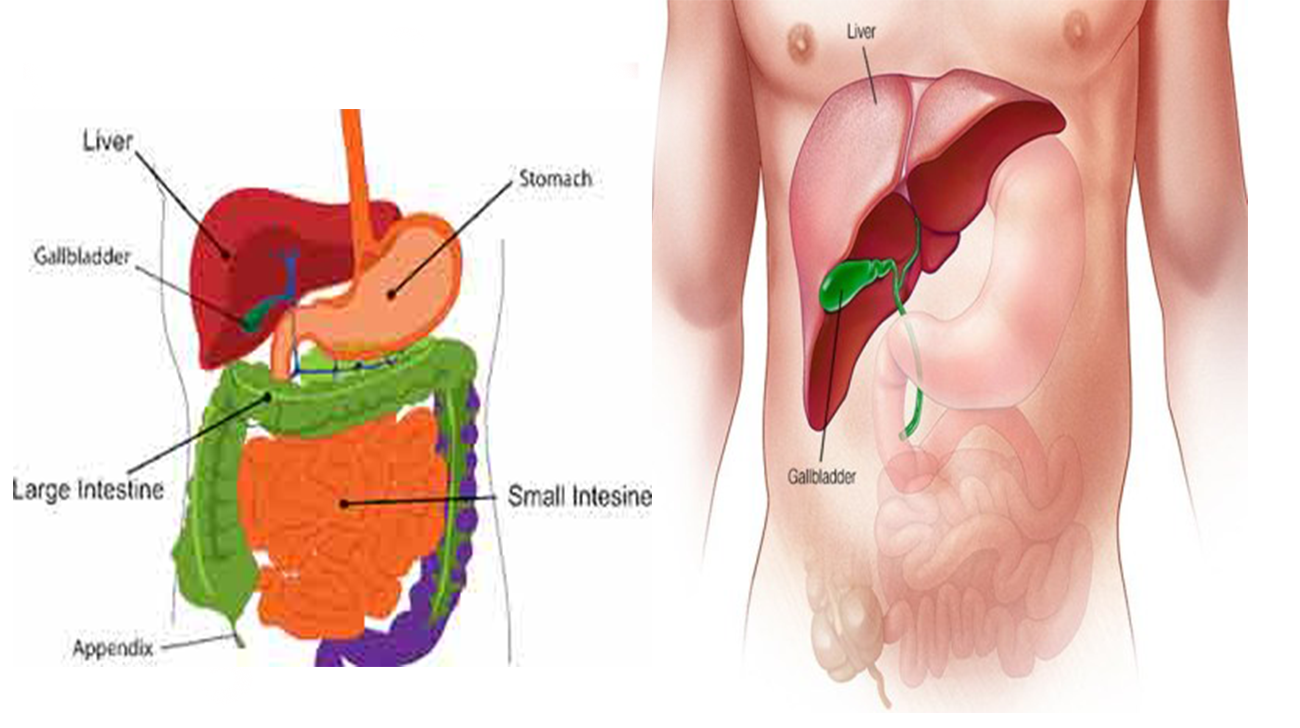
Relevance
Stress ulcers are superficial damage to the lining of the stomach or intestines that can result from shock, sepsis, or trauma.Depending on the severity of the injury, the affected areas can cause varying degrees of pain and bleeding. Upper GI bleeding due to stress ulcers contributes significantly to increased disease severity and mortality in people admitted to the ICU. However, standards of care have improved and the incidence of upper GI bleeding in the ICU has decreased. Thus, not all critically ill patients require prophylactic treatment.
Prevention of stress ulcers can lead to negative consequences, for example, mechanical ventilation-associated pneumonia (IVL-AP). IVL-AP is a bacterial infection of the lungs that occurs in people who are on mechanical ventilation. IVL-AP usually presents with fever, cough, and purulent sputum. The risk of IVL-AP increases in patients with severe illnesses, with an increase in the length of hospital stay, or in the prevention of stress ulcers. Therefore, strategies need to be evaluated that safely reduce the incidence of upper gastrointestinal bleeding.
Therefore, strategies need to be evaluated that safely reduce the incidence of upper gastrointestinal bleeding.
Research characteristics
Evidence is current to August 2017. We included 106 studies involving a total of 15,027 critically ill people of all ages and genders.
Main Findings
Relevant effects have been found for the following drugs: h3 receptor blockers, antacids, sucralfate and proton pump inhibitors.
h3 receptor blockers suppress gastric acid secretion by blocking histamine receptors, but they can cause a decrease in platelet count (thrombocytopenia), kidney inflammation (interstitial nephritis) and confusion.Antacids neutralize stomach acid but can cause diarrhea or constipation. Proton pump inhibitors suppress the final stage of gastric acid production and have been found to be associated with an increased risk of diarrhea Clostridium difficile . Gastroprotective agents such as sucralfate create a barrier between stomach acid and the stomach lining by covering it. However, they can cause constipation and interfere with the absorption of some antibacterial agents.
However, they can cause constipation and interfere with the absorption of some antibacterial agents.
Compared with placebo or no prophylactic treatment, h3-receptor blockers, antacids, and sucralfate may be effective in preventing clinically significant upper GI bleeding in ICU patients. Hospital-acquired pneumonia was more common in ICU patients receiving h3 receptor blockers or sucralfate compared with patients receiving placebo or no prophylactic treatment.
Low-certainty evidence suggests that proton pump inhibitors were more effective than H2 receptor blockers in preventing upper GI bleeding in ICU patients.The probability of bleeding from the upper gastrointestinal tract with the use of proton pump inhibitors was in 25 people out of 1000, with the use of h3-receptor blockers – in 73 people out of 1000 (95% confidence interval from 46 to 115 people). The benefits and harms of h3 receptor blockers versus proton pump inhibitors in relation to the risk of developing nosocomial pneumonia were similar.
Quality of evidence
Our confidence in the evidence ranged from low to moderate.For the effects of the various interventions versus placebo or no prophylaxis, there was moderate confidence in the evidence (h3 receptor blockers) or low (antacids and sucralfate). For the effect of h3 receptor blockers (versus placebo or no prophylactic treatment) on the risk of nosocomial pneumonia, the evidence was low in confidence. For the effect of h3 receptor blockers versus proton pump inhibitors on the risk of developing hospital-acquired pneumonia, there was also low certainty of the evidence.
Gastrointestinal bleeding, surgery | Help with internal bleeding of the gastrointestinal tract
Suspicion of bleeding from the gastrointestinal tract requires prompt diagnosis and identification of the localization of the pathological process. When making a diagnosis, doctors of the Center of Surgery “CM-Clinic” are guided by the data of the initial examination (they measure the patient’s blood pressure and set his heart rate), the results of instrumental and laboratory tests.
To verify the pathology, the following are mandatory:
- laboratory blood tests, including those for assessing the degree of blood loss and determining indications for blood transfusion;
- gastroscopy – the procedure is performed to visually examine the gastrointestinal tract and identify the source of bleeding;
- colonoscopy – used to diagnose pathology in the lower gastrointestinal tract.
If necessary, the Center of Surgery “CM-Clinic” uses CT of the abdominal cavity with intravenous contrast enhancement or capsule endoscopy of the small intestine.The patient, if necessary, is examined by an anesthesiologist and related specialists (gastroenterologist, cardiologist).
Treatment
If gastrointestinal bleeding is suspected, the doctors of the CM-Clinic Surgery Center hospitalize the patient on an emergency basis. The patient should be taken to the hospital within 3 hours from the moment the first clinical signs of pathology appear.
The surgeons of our center stop active bleeding from the stomach and duodenum when performing EGDS using special equipment.With the help of an endoscope, the doctor visually assesses the condition of the mucous membrane of the stomach and duodenum. When a bleeding vessel is identified, it coagulates.
Bleeding from a tumor of the stomach or intestine requires surgery. The volume of the operation depends on the diagnosis, the severity of blood loss, the timing of treatment and the presence of concomitant diseases.
With the help of appropriate manipulations, the specialists of “CM-Clinic” eliminate the immediate threat to the patient’s life. In the future, doctors select the optimal drug therapy to stabilize body function and prevent the development of gastrointestinal bleeding in the future.
In the postoperative period, when the immediate threat to life has been eliminated, conservative treatment is effective. Therapy is aimed at restoring normal circulating blood volume and normalizing the level of lost hemoglobin. As part of drug therapy, proton pump inhibitors, hemostatic agents, iron preparations, cyanocobalamin, folic acid can be used.
As part of drug therapy, proton pump inhibitors, hemostatic agents, iron preparations, cyanocobalamin, folic acid can be used.
Treatment of bleeding of the digestive tract – symptoms of bleeding from the upper or lower gastrointestinal tract
Digestive tract bleeding treatment
In medicine, bleeding from the digestive tract is called gastrointestinal.Their peculiarity is in the release of blood into the lumen of the gastrointestinal tract. If it enters the abdominal cavity from the digestive organs, then such bleeding is classified as abdominal. We will tell you about what may be causing the problem, what symptoms to look for, and how to provide first aid.
What happens with bleeding in the gastrointestinal tract
The problem is damage to the walls of blood vessels, in which tears are formed. In the vast majority of cases, this is a consequence or complication of various diseases.As a result, blood enters the lumen of the digestive tract. The most dangerous are ruptures of large vessels – veins, arteries. In such cases, blood loss can be more than 1 liter, which can be fatal (the total blood volume in the body of an adult male is about 5 liters).
The most dangerous are ruptures of large vessels – veins, arteries. In such cases, blood loss can be more than 1 liter, which can be fatal (the total blood volume in the body of an adult male is about 5 liters).
How blood vessels bleed
Bleeding can be mild, moderate or severe. His character could be:
- arterial – strong, jet;
- venous – blood loss occurs gradually;
- capillary – minor discharge due to damage to small vessels.
The problem itself may be stable / unstable, recurrent. Vessels of the mucous membrane, submucosal and intermuscular plexus, as well as those located outside the digestive tract, can bleed.
Expiration can last for several hours or days. In medicine, a distinction is made between:
- profuse blood loss – the patient loses more than 1 liter of blood in 1-3 hours and needs urgent medical attention;
- acute – less than 1 liter expires in 1-2 days, the patient’s vital signs are relatively stable;
- chronic – develop slowly, often over several weeks or even months, the intensity of symptoms gradually increases.

Views
- Bleeding from the upper digestive tract (esophagus, stomach, duodenum 12) accounts for about 80% of all cases.
- Discharge of blood from the lower gastrointestinal tract is less common and affects the rectum, small and large intestines.
Why is the problem
Medicine knows about 200 causes of bleeding in the digestive tract. At the first symptoms, you should seek professional help from a doctor and in no case self-medicate, as this will only aggravate the condition.
Ulcer
Most common reason. With an ulcer, the integrity of the mucous membrane of the organ is disrupted, and the main difference between the disease is deep tissue damage. The disease is chronic – with remission and exacerbations. On the mucous membrane of the stomach, esophagus or duodenum 12 areas of inflammation are formed, in which the protective function decreases (mucus secretion). Gradually, the tissues of the mucosa, including the walls of blood vessels, become thinner, which leads to their rupture.
Varicose veins
The problem may occur in the esophagus or stomach due to increased portal pressure.Most often, cirrhosis of the liver becomes the root cause. The rupture of a large vessel with varicose veins is as dangerous as possible, since at this moment there is an abundant outflow of blood. According to statistics, in 40% of cases, it stops spontaneously. And the activity of bleeding depends on the degree of liver damage.
Large intestine diverticulosis
In this disease, the colon mucosa protrudes, forming diverticula. The reasons for their formation are not completely clear to medicine, basically, they are associated with increased intraluminal pressure.Basically, the pathology is typical for adult patients over 50 years old. In the acute course of the disease and rupture of intramural blood vessels in the area of diverticulum, intestinal bleeding occurs.
Tumors and polyps
Arises in the small and large intestines, are benign neoplasms that grow in the intestinal lumen. Most often, the bleeding is minor and chronic. The danger lies in the possible degeneration into malignant tumors.
Most often, the bleeding is minor and chronic. The danger lies in the possible degeneration into malignant tumors.
Hemorrhoids
This is the formation of venous nodes around the rectum in the anal area. The main reasons are thrombosis or tissue inflammation. The disease can be acute or chronic, and its common causes are a sedentary lifestyle, excessive physical exertion, and obesity. Bleeding (the color may be scarlet or dark) is minor and occurs most often after a bowel movement.
Esophagitis, acute hemorrhagic gastropathy, erosive duodenitis, Mallory-Weiss syndrome are more rare as a cause of bleeding in the upper gastrointestinal tract.In the lower part of the bleeding can cause tumors, vascular malformations, various inflammations.
Who is at risk?
Basically, diseases that lead to bleeding occur in adults. Moreover, according to statistics, men are 2 times more likely than women to diagnose problems with the organs of the gastrointestinal tract – the stomach, duodenum 12. As we have already noted above, ulcerative pathologies hold the first place in terms of the number of diseases. The age peak of diseases is 40-45 years old.
As we have already noted above, ulcerative pathologies hold the first place in terms of the number of diseases. The age peak of diseases is 40-45 years old.
However, the problem is not limited to adults. The diagnosis associated with ulcerative lesions of the gastrointestinal tract is often given to adolescents who uncontrollably consume junk food and drinks. There are also frequent cases of the formation of intestinal polyps.
Gastric and intestinal bleeding is increasingly found even in newborns. Basically, volvulus leads to them. In 3-year-old children, the expiration can be caused by the formation of a diaphragmatic hernia, as well as abnormalities in the development of the organs of the lower gastrointestinal tract.
10 risk factors
- Improper nutrition;
- overweight;
- low physical activity;
- excessive addiction to tobacco, alcohol, leading to intoxication of the body;
- frequent stress;
- development of infection in the organs of the upper gastrointestinal tract;
- metabolic disorders;
- genetic predisposition.

90,081 frequent consumption of carbonated drinks;
90,081 taking medications;
What symptoms to look for
Patients with the diagnoses listed above should be especially monitored for the appearance of anxiety symptoms. If you are taking medications for the liver and gastrointestinal tract, carefully monitor your health. If you are alarmed by the changes discussed below, see your doctor. However, it is useful for every person to know these signs, since many diseases of the lower and upper gastrointestinal tract develop without obvious painful sensations.Often, bleeding symptoms may be the first manifestation.
1. Weakness
This is the main symptom of any prolonged bleeding. The weakness gradually increases, the patient’s skin turns pale, he feels cold sweat, hum in the ears, trembling of the limbs. The weakened state can last for several minutes, after which it passes and periodically returns. If the blood flows out actively, fainting or semi-fainting, and even a state of shock, is possible.
2.Vomiting
This symptom accompanies severe blood loss – more than 0. 5 liters. If the vomit is dark cherry color, it is most likely coming from a vein near the esophagus. If unchanged blood is clearly visible in the vomit, the integrity of the artery in the esophagus is most likely broken. If the patient vomits the so-called brown “coffee grounds”, the problem lies in the gastric vessels. Only a doctor can accurately determine the nature, place and intensity of blood loss.
5 liters. If the vomit is dark cherry color, it is most likely coming from a vein near the esophagus. If unchanged blood is clearly visible in the vomit, the integrity of the artery in the esophagus is most likely broken. If the patient vomits the so-called brown “coffee grounds”, the problem lies in the gastric vessels. Only a doctor can accurately determine the nature, place and intensity of blood loss.
3.Chair
Blood traces in the feces may appear in a few hours or 1-2 days after the violation of the integrity of the vessels. With significant problems with the stomach or duodenal ulcer, as well as blood loss in a volume of more than 0.5 liters, melena can be observed – loose stools that resemble tar in color and consistency. If the blood loss is of a smaller volume, which often happens, for example, with intestinal bleeding, then the stool remains shaped, but its color darkens.
Please note that darkening of the stool can occur due to the consumption of foods that contain dark dyes, such as blueberries, cherries. Dark stools are not an absolute sign of blood in the stool and problems in the upper or lower GI tract. The diagnosis can only be made by a qualified specialist.
Dark stools are not an absolute sign of blood in the stool and problems in the upper or lower GI tract. The diagnosis can only be made by a qualified specialist.
How is the diagnosis made
The doctor examines the patient, assessing his external condition, the shade of the skin, mucous membranes. Then he measures blood pressure – often it is reduced.
In a clinic, the patient undergoes a general blood test. From it, you can quickly get an idea of \ u200b \ u200bthe level of hemoglobin, the volume of other blood cells.In addition, the diagnosis is made by biochemical analysis, but it is usually prescribed several days after the onset of blood loss, since the chemical composition of the blood changes only over time.
The main diagnosis concerns the detection of the very cause of the violation of the integrity of the vessels. For this, doctors use the following hardware examinations.
- Endoscopy – examination of the esophagus, stomach, duodenum using a flexible tube with a miniature camera allows you to quickly find a problem area;
- Contrast radiography – an effective method for detecting bleeding in the gastrointestinal tract is the introduction of a safe contrast solution into the body, followed by an x-ray;
- Magnetic resonance imaging is a modern method that allows you to obtain comprehensive information about the state of all tissues of a particular organ of the gastrointestinal tract.

First aid
When the first warning signs appear, be sure to call an ambulance, as the bleeding may not stop on its own.
While the doctors arrive, place the patient in a horizontal position and raise his legs. If possible, put ice on your stomach. Doctors categorically do not recommend prescribing or taking any medications on their own at this moment, as they can increase bleeding.
It is strictly forbidden to use water! If you or the patient still needs to take a pill, crush it and swallow the powder along with ice cubes.In any case, do not prescribe drugs yourself. Wait for the ambulance to arrive – the doctors will provide specialized assistance. Be healthy!
Tokareva Lyudmila Georgievna, therapist of medical offices 36.6
THERE ARE CONTRAINDICATIONS, BEFORE USING IT IS NECESSARY TO CONSULT A SPECIALIST
Gastrointestinal bleeding – Directory of diseases
Bleeding is the outflow of blood outside the walls of blood vessels. Bleeding can be obvious – external and internal – hidden. Surgeons or proctologists are involved in stopping bleeding in the gastrointestinal tract.
Bleeding can be obvious – external and internal – hidden. Surgeons or proctologists are involved in stopping bleeding in the gastrointestinal tract.
Reasons
Bleeding in the gastrointestinal tract develops in a number of diseases and pathological conditions requiring emergency medical care, regardless of whether the background is an acute or chronic course of the process.
Vascular hemorrhage occurs due to three reasons:
- Rupture of the vascular wall: gunshot and stab wounds, aneurysm, varicose veins of the esophagus with cirrhosis of the liver, trauma by a foreign body, Mallory-Weiss syndrome (with severe vomiting, the gastric mucosa ruptures), syphilis or intestinal tuberculosis, hemorrhoids, anal fissure.
- Local destruction of the walls of blood vessels: ulcerative lesion of the stomach and duodenal bulb, cancer, chemical burns, ulcerative colitis of a nonspecific nature, erosive esophagitis, hemorrhagic gastritis after taking alcohol or medications (non-steroidal anti-inflammatory drugs and glucocorticoids.

- Blood leakage through thinned vessels: diseases of the hematopoietic system, including hemophilia, intestinal polyps, heart attack with thrombosis and atherosclerosis of the mesenteric arteries, telangiectasia, radiation sickness, dysentery, intravascular disseminated blood coagulation syndrome.
Surgeons divide bleeding in the gastrointestinal tract into upper and lower, depending on the location. This is necessary in order to determine the tactics of treatment or the scope of surgery.
Symptoms
Signs of bleeding from the upper and lower gastrointestinal tract are the same in acute massive bleeding. There are phenomena of shock from blood loss, a drop in blood pressure, loss of consciousness with a transition to a coma.
Symptoms differ with less blood loss:
- Bleeding in the upper gastrointestinal tract. Direct signs: vomiting with blood the color of coffee grounds, tarry or dark cherry-colored stools. Indirect signs: a decrease in hemoglobin and erythrocytes in the general blood test (anemia), a decrease in blood pressure, weakness, dizziness, pain in the abdomen and behind the breastbone.

- Bleeding in the lower gastrointestinal tract. Direct signs: the release of blood during bowel movements, while the brighter the blood, the lower the source of bleeding.With anal fissures, scarlet blood, not mixed with feces. Indirect signs: pain in the lower abdomen associated with the defeat of the large intestine by infectious agents or parasites, a painful act of defecation with hemorrhoids and anal fissure. In infectious processes, there is an increased body temperature, jaundice, arthritis. For tuberculous lesions, manifestations of prolonged fever, sweating, emaciation, and diarrhea are characteristic.
Diagnostics
First of all, it is important to assess the total blood loss and determine the shock index.With chronic bleeding, for example, due to hemorrhoids, anemia is noted in the general blood test. Worm infestation is evidenced by a large number of blood eosinophils and the detection of eggs of worms in the feces.
When vomiting with an admixture of blood, fibrogastroduodenoscopy is performed in order to determine the source and nature of bleeding. To clarify the diagnosis, if time permits, scintiography or angiography is performed.
To clarify the diagnosis, if time permits, scintiography or angiography is performed.
In case of bleeding from the lower intestines, proctologists perform a digital examination of the rectum and anoscopy.If necessary, sigmoidoscopy and colonoscopy, as well as arteriography, are performed.
Treatment
First of all, in case of massive bleeding, anti-shock measures are performed with the obligatory replenishment of the total blood volume and the use of hemostatic agents. In 80% of cases, it is possible to stop bleeding without surgery.
In emergency cases, with injuries and wounds, surgical treatment is carried out with suturing of ruptures or removal of damaged areas of the intestine.Surgical treatment in the lower intestine is carried out by proctologists and includes the following manipulations:
- electro- or laser coagulation of foci of bleeding and angioplasia;
- use of sclerosing solutions or truncation of hemorrhoids;
- Closure of anal fissures with plastic of the rectal sphincter.

Prevention
Prevention involves the treatment of underlying diseases. This is done by therapists, infectious disease specialists, proctologists, hematologists.If the veins of the esophagus are damaged due to increased blood pressure in the hepatic (portal) vein, surgeons perform operations to create shunts to reduce blood pressure in the vascular system.
Fecal occult blood test
General information about the study
Analysis of feces for occult blood is an extremely important laboratory study in the diagnosis of latent bleeding from various parts of the gastrointestinal tract. Such bleeding is one of the early symptoms of a number of serious gastrointestinal diseases, including cancer.With latent bleeding, even if it exists for a long time, it is very difficult to determine the presence of blood in the feces both visually and microscopically, and most often it is simply impossible.
With profuse bleeding from various parts of the gastrointestinal tract, the blood changes the appearance of feces so much that its presence can often be determined visually. If bleeding is from the lower intestines (colon, rectum), then the blood will be scarlet, possibly in the form of clots or impurities. If the source of bleeding is in the upper sections of the gastrointestinal tract (part of the small intestine, esophagus, stomach), then the feces turn into black, “tarry” due to the interaction of blood and special enzymes produced in these sections of the gastrointestinal tract.As a rule, if there are visual signs of gastrointestinal bleeding, then the situation is acute and requires emergency measures (emergency care). However, with less pronounced violations of the integrity of the gastrointestinal mucosa, with the involvement of a small number of vessels in the process, the color and consistency of feces do not change, but erythrocytes in feces will be visible during microscopic examination. If erythrocytes are not microscopically visible, and there is a suspicion of latent bleeding, in this case, an analysis of feces for occult blood is required.This study is carried out by measuring the amount of altered hemoglobin (and not the red blood cells themselves).
If bleeding is from the lower intestines (colon, rectum), then the blood will be scarlet, possibly in the form of clots or impurities. If the source of bleeding is in the upper sections of the gastrointestinal tract (part of the small intestine, esophagus, stomach), then the feces turn into black, “tarry” due to the interaction of blood and special enzymes produced in these sections of the gastrointestinal tract.As a rule, if there are visual signs of gastrointestinal bleeding, then the situation is acute and requires emergency measures (emergency care). However, with less pronounced violations of the integrity of the gastrointestinal mucosa, with the involvement of a small number of vessels in the process, the color and consistency of feces do not change, but erythrocytes in feces will be visible during microscopic examination. If erythrocytes are not microscopically visible, and there is a suspicion of latent bleeding, in this case, an analysis of feces for occult blood is required.This study is carried out by measuring the amount of altered hemoglobin (and not the red blood cells themselves).
A positive fecal occult blood reaction means that a person has diseases of the gastrointestinal tract, causing a violation of the integrity of the mucous membrane, when a small amount of blood is secreted into the lumen of the stomach or intestines. This can occur with stomach or duodenal ulcers, ulcerative colitis, Crohn’s disease, polyps, helminth infestations.Since tumors, primary and metastatic, cause lesions of the gastrointestinal mucosa, even with small sizes, the study is used at the first stage of detecting gastrointestinal tumors. It is especially important to determine occult blood in the diagnosis of colon cancer, since it is with tumors in this section of the intestine that latent bleeding begins at the earliest stages.
Blood in feces can also be detected with nosebleeds, bleeding from the gums and pharynx, in patients with varicose veins of the esophagus, erosive esophagitis, with hemorrhoids and other diseases, so it is imperative to take this into account when evaluating the test results.
The reliability of the analysis is highest when it is repeated. Negative test results do not exclude the possible presence of an erosive-ulcerative or neoplastic lesion of the gastrointestinal tract in the patient. It is important that the results should be evaluated in conjunction with other instrumental and laboratory studies, since they themselves cannot be the only criterion for making a diagnosis.
Sometimes all fecal occult blood tests are mistakenly called a test or the Gregersen reaction, erroneously – because the Gregersen test (benzidine test) is the most common, but not the only method for detecting occult blood in feces, urine, vomit, etc.d.
What is the research used for?
- For the diagnosis of gastrointestinal diseases, accompanied by violations of the integrity of the mucous membrane (peptic ulcer and duodenal ulcer, primary and metastatic tumors of the esophagus, stomach, large and small intestine, duodenal papilla, intestinal tuberculosis, ulcerative colitis, helminthiasis).

- To assess the extent of damage to the gastrointestinal mucosa.
- To assess the adequacy of therapy for gastric ulcer, NUC, Crohn’s disease, intestinal tuberculosis.
- To assess the severity of the gastrointestinal tract disease and give its prognosis.
When is the study ordered?
- For abdominal pain, heartburn, nausea, vomiting.
- With frequent mushy stools, false urge to defecate, constipation, abdominal pain, weight loss, loss of appetite, fever.
- In case of detected tumors of the gastrointestinal tract (instrumental methods) to exclude hidden bleeding of the gastrointestinal tract.
- When helminths are detected – to assess damage to the gastrointestinal mucosa.
- If the patient has previously been diagnosed with a stomach ulcer (ulcerative colitis, Crohn’s disease, polyposis, intestinal tuberculosis).
Gastrointestinal bleeding – Medical center “Liko-Med”
Publication date
3 October 2018
Gastrointestinal bleeding
Gastrointestinal bleeding is characterized by the presence of blood in the gastrointestinal tract, which is the main symptomatology of the pathology. This condition can be caused by various reasons.Most stages of the disease are curable, but some of them can be very life-threatening.
This condition can be caused by various reasons.Most stages of the disease are curable, but some of them can be very life-threatening.
Bleeding in the esophagus, stomach and upper part of the small intestine may be accompanied by vomiting with bright red blood or coffee-colored vomit, as well as black tarry stool. Bleeding that occurs in the lower part of the small intestine or large intestine appears as bright red streaks of blood during bowel movements. Correct treatment can only be prescribed if the source of the bleeding is identified.
Ambulance
It is recommended to urgently seek medical help in case of severe or sudden bleeding, manifested in vomit or stool.
What to expect?
The bleeding can be mild and last for a long time, or it can be sharp and severe. In some cases, it is almost impossible to determine the deviation from the norm. A small amount of blood in the stool can be detected only through special studies.
Treatment should be prescribed only after finding out the reasons that provoke this pathology. Bleeding in the upper esophagus most often occurs with stomach ulcers, inflammation or tumors of the esophagus. Bleeding present in the lower digestive tract results from diverticulosis, dilated colon vessels, polyps, anal fissures and hemorrhoids. Blood in the stool can also indicate the presence of cancer, inflammatory bowel disease, and infectious diarrhea.
Bleeding in the upper esophagus most often occurs with stomach ulcers, inflammation or tumors of the esophagus. Bleeding present in the lower digestive tract results from diverticulosis, dilated colon vessels, polyps, anal fissures and hemorrhoids. Blood in the stool can also indicate the presence of cancer, inflammatory bowel disease, and infectious diarrhea.
How is it aggravated?
If the cause of the bleeding is a stomach ulcer, the condition may worsen when taking non-steroidal drugs such as aspirin, ibuprofen or naproxen.
Treatment
Endoscopy can be used to diagnose bleeding. The effectiveness of the main treatment should be aimed at eliminating the condition that is the cause of the development of symptoms.
When to see a doctor?
Symptoms of gastrointestinal bleeding are a serious reason to see a doctor.
What to ask a doctor?
- How to stop bleeding?
- What caused the disease?
- What problems are possible in the future?
- How can I speed up the healing process?
Making a diagnosis
To diagnose gastrointestinal bleeding, the patient’s history and physical examination are taken.

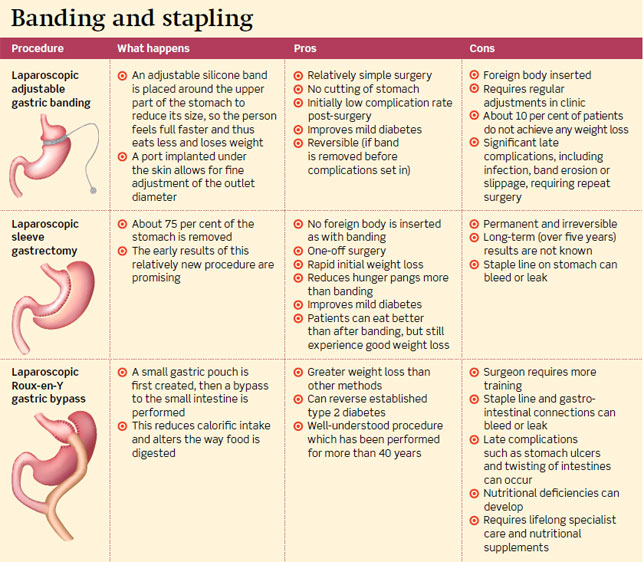
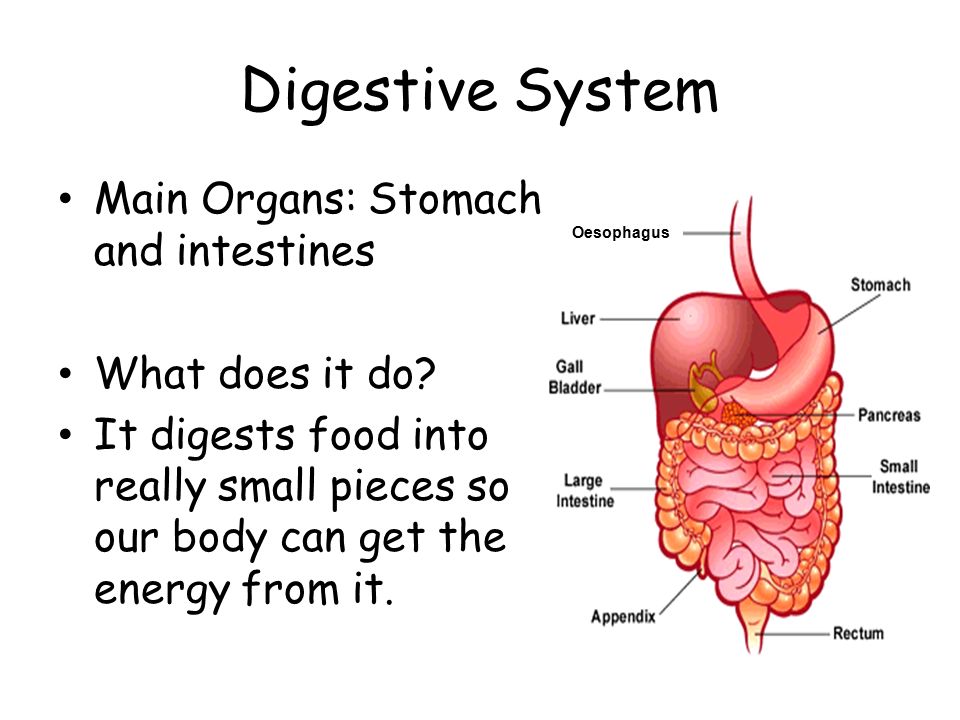 This test uses a tiny camera that is swallowed, passes through the intestine, and takes pictures of the small intestine that is more difficult to reach with scopes.
This test uses a tiny camera that is swallowed, passes through the intestine, and takes pictures of the small intestine that is more difficult to reach with scopes. Imaging tests that take pictures of your digestive tract.
Imaging tests that take pictures of your digestive tract.

